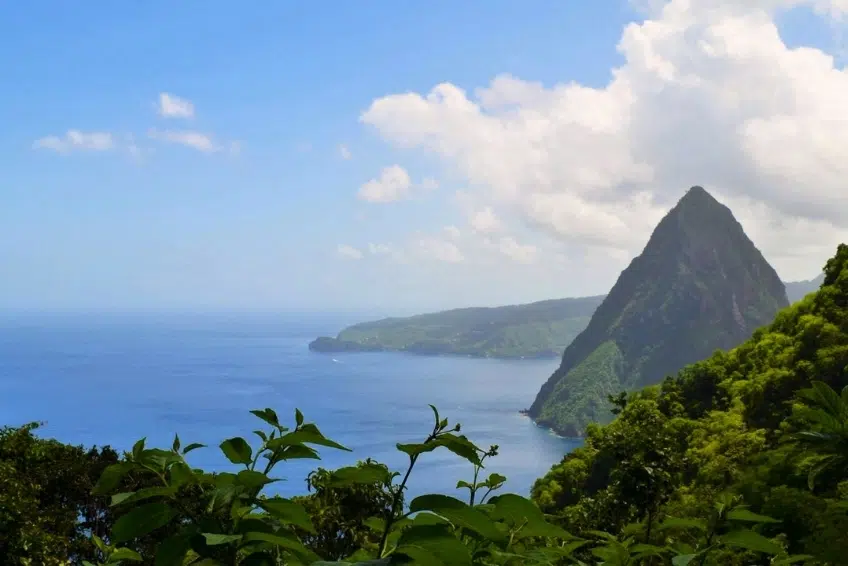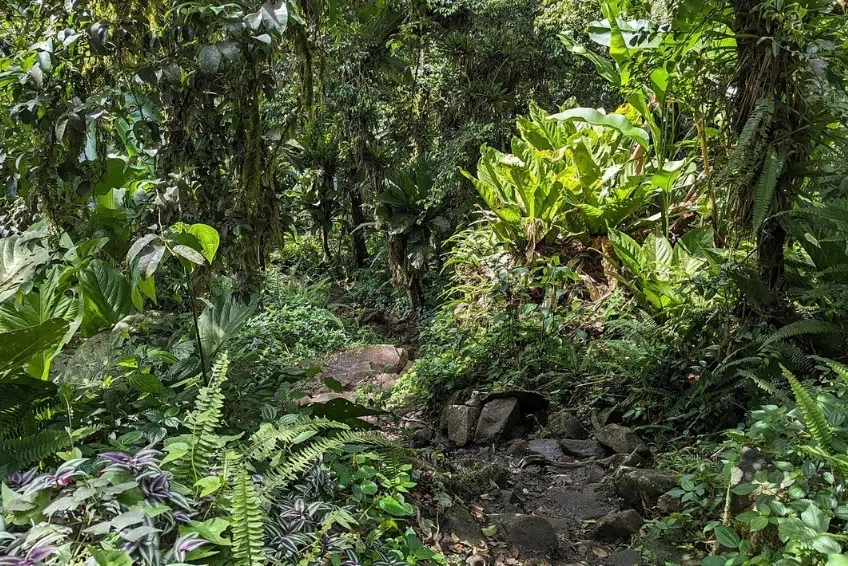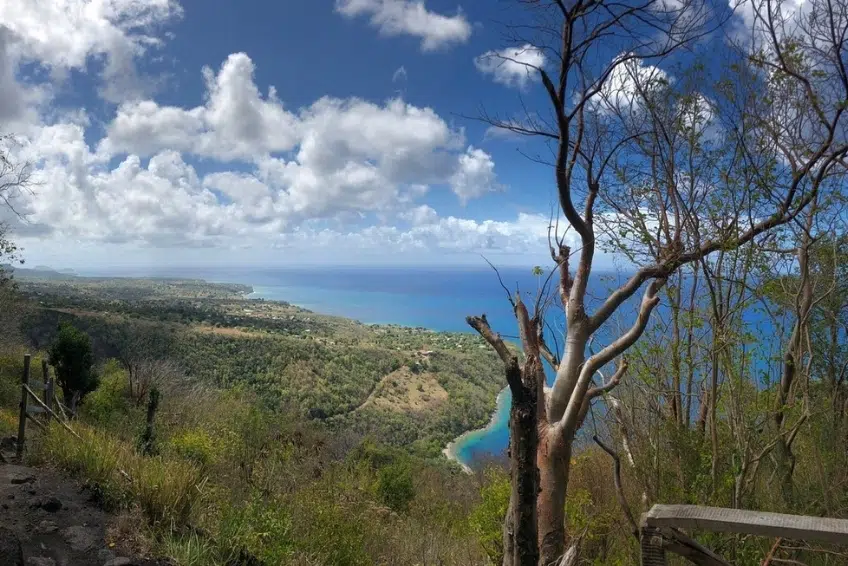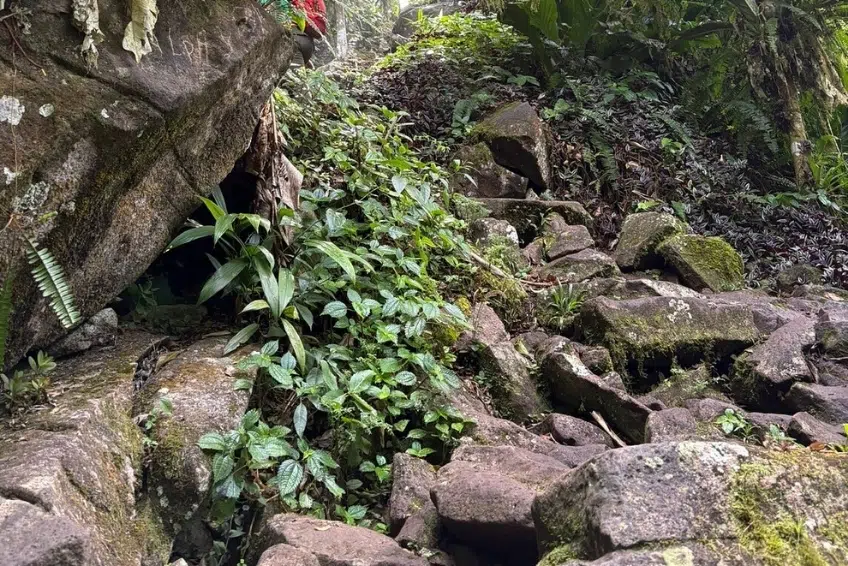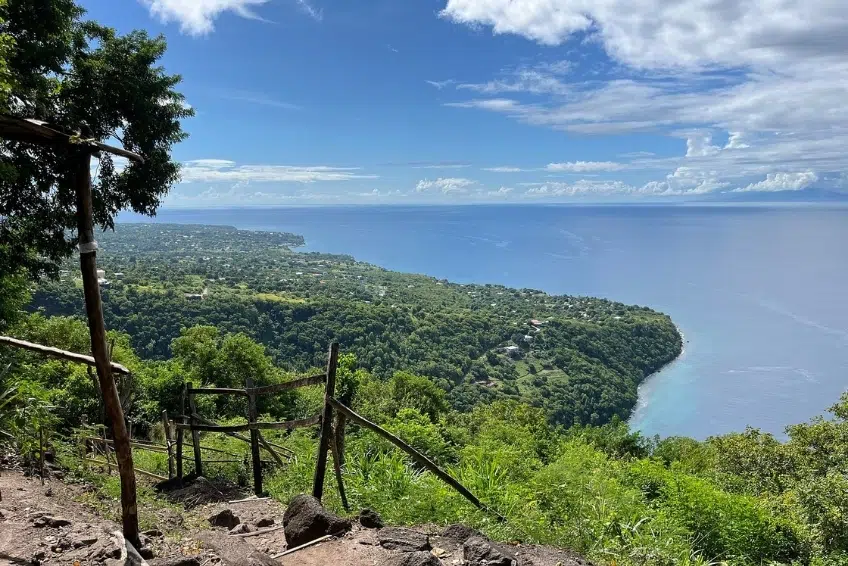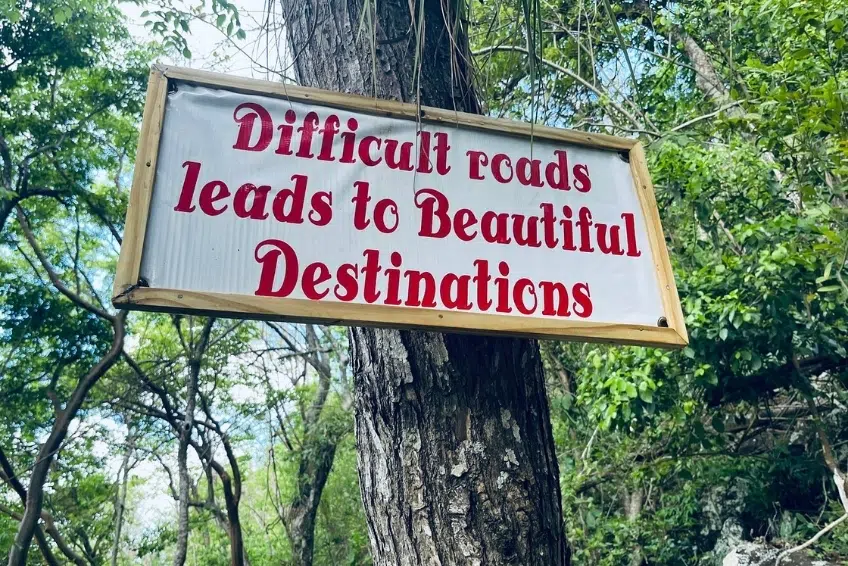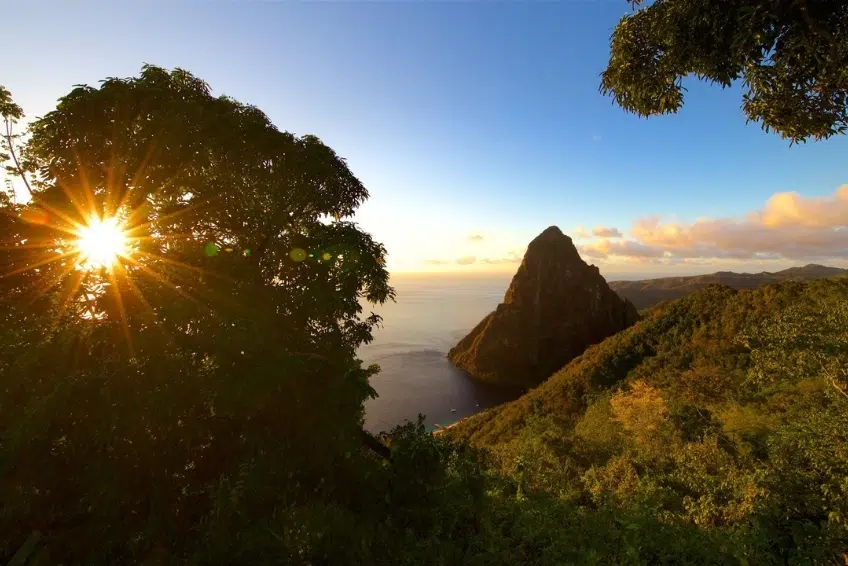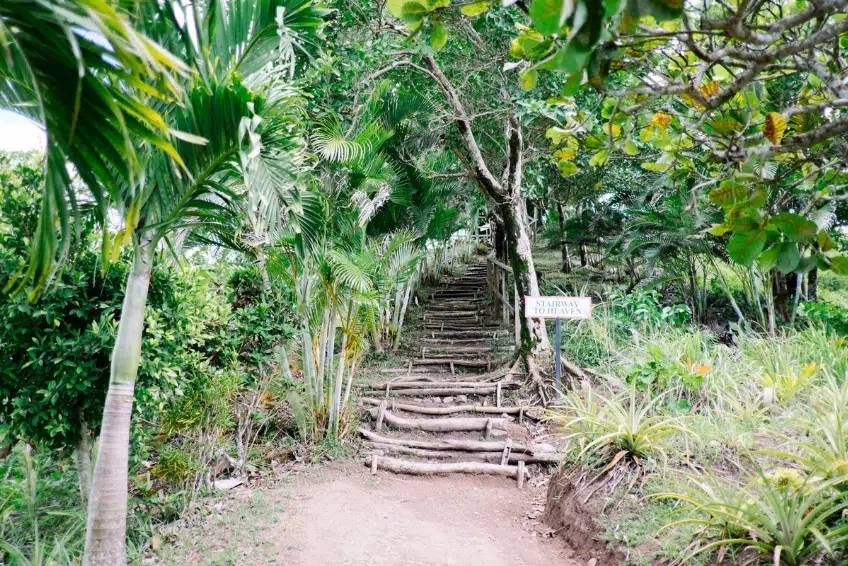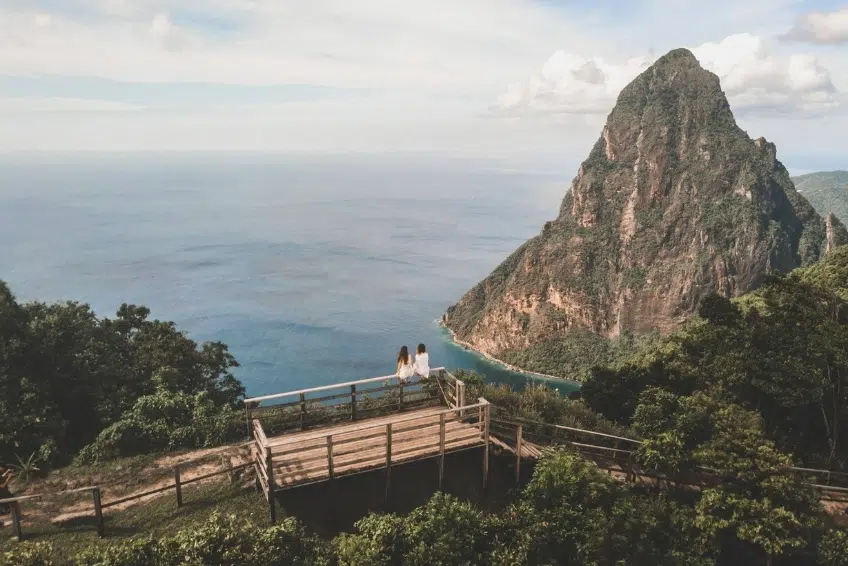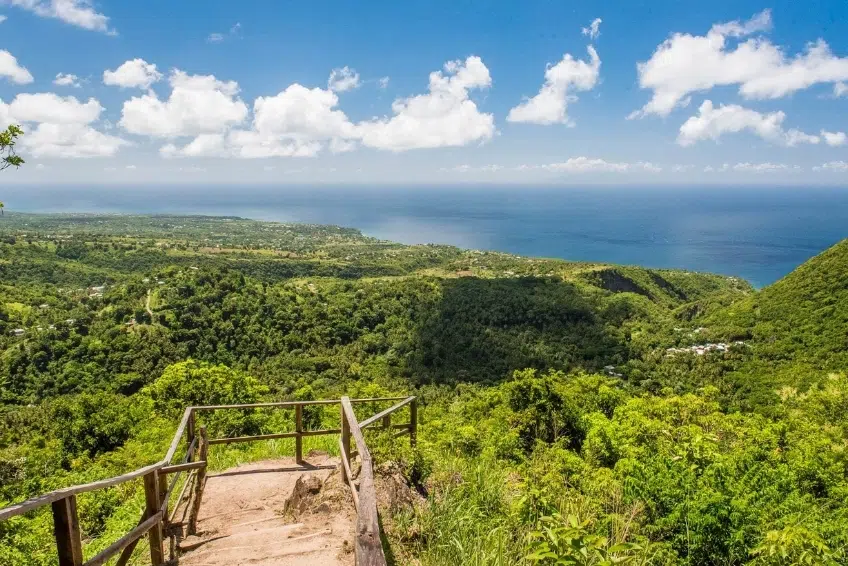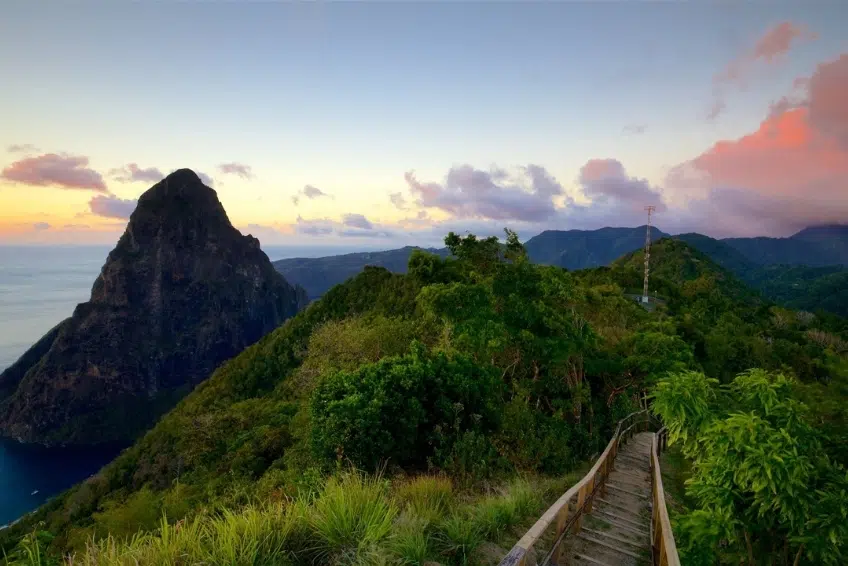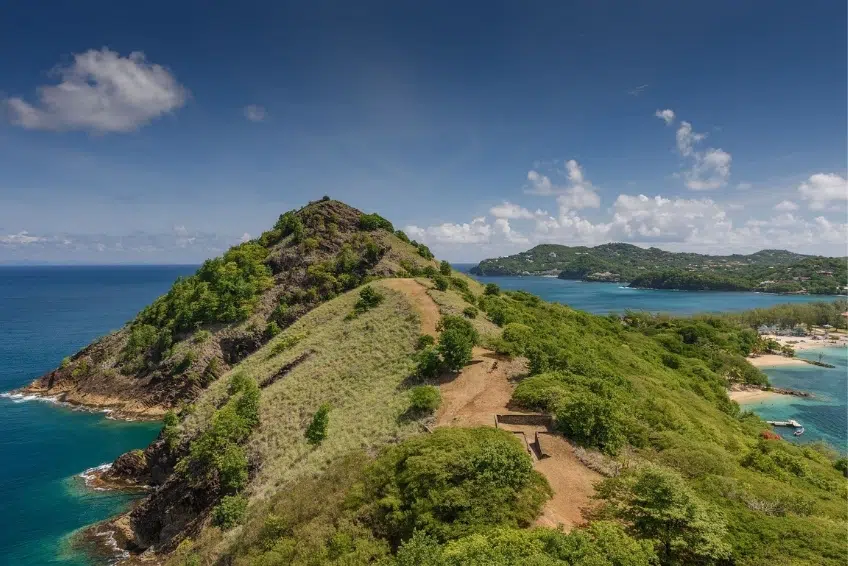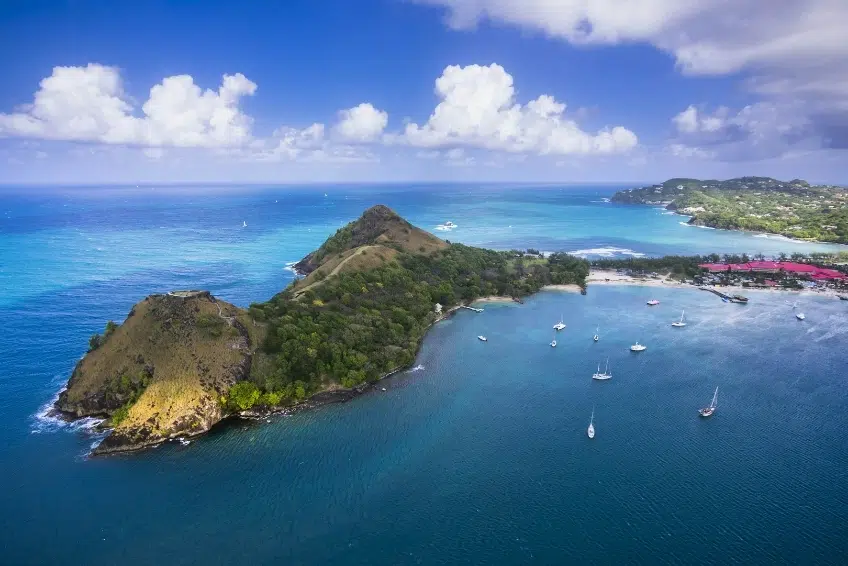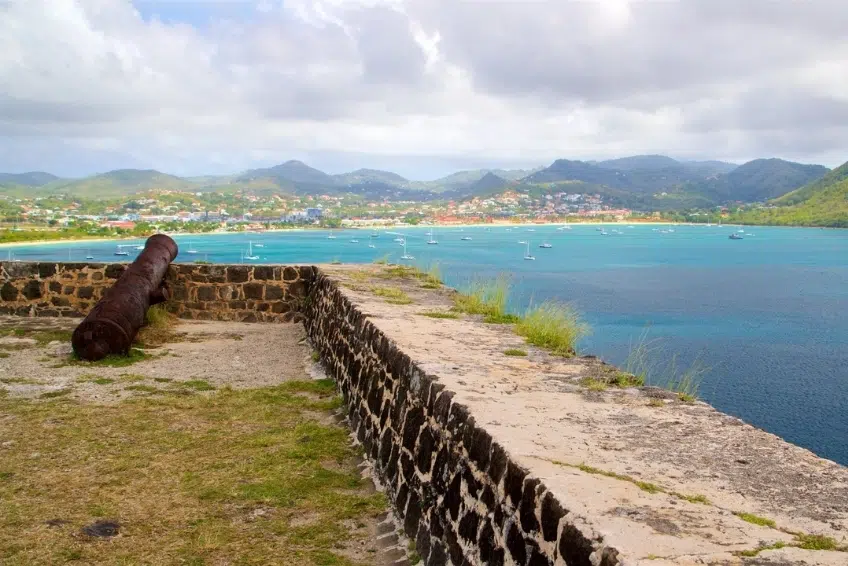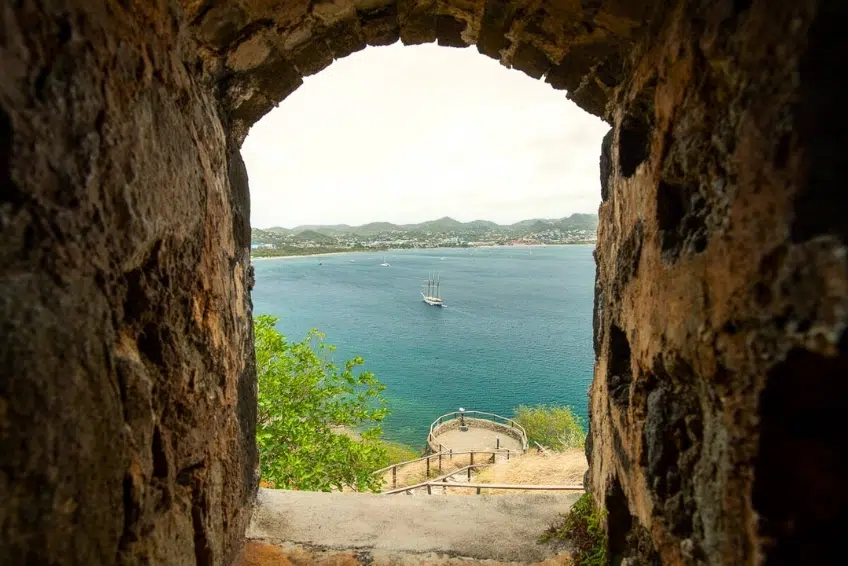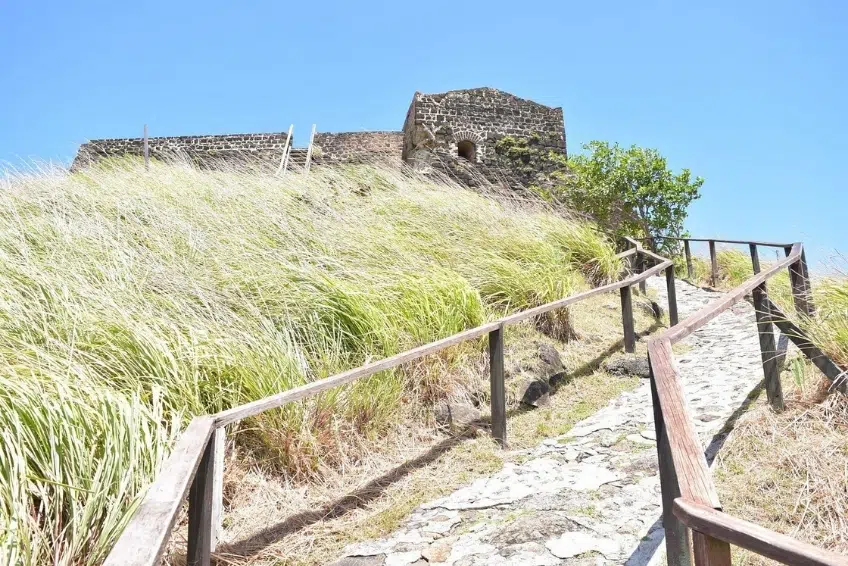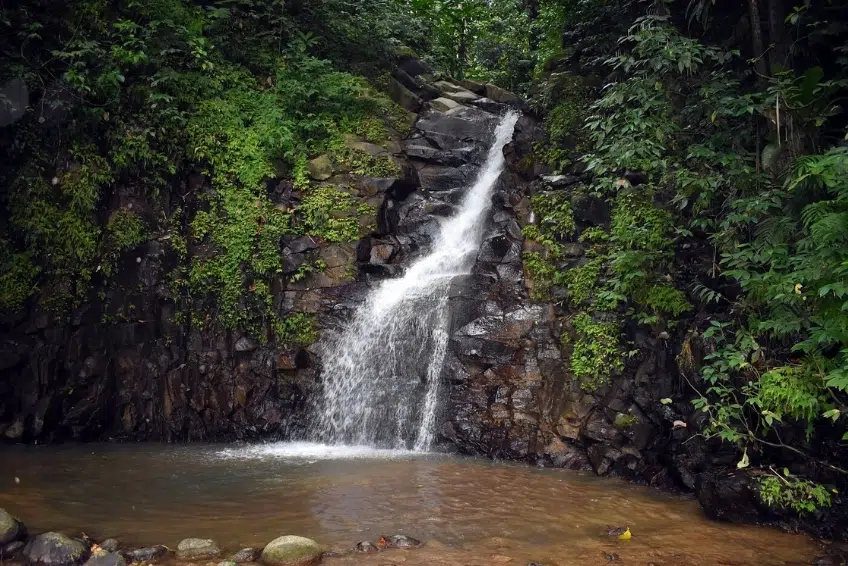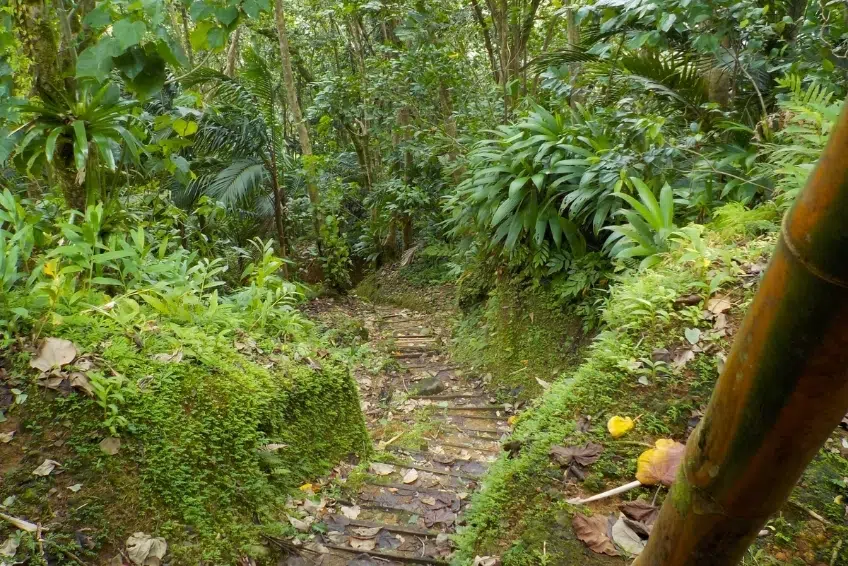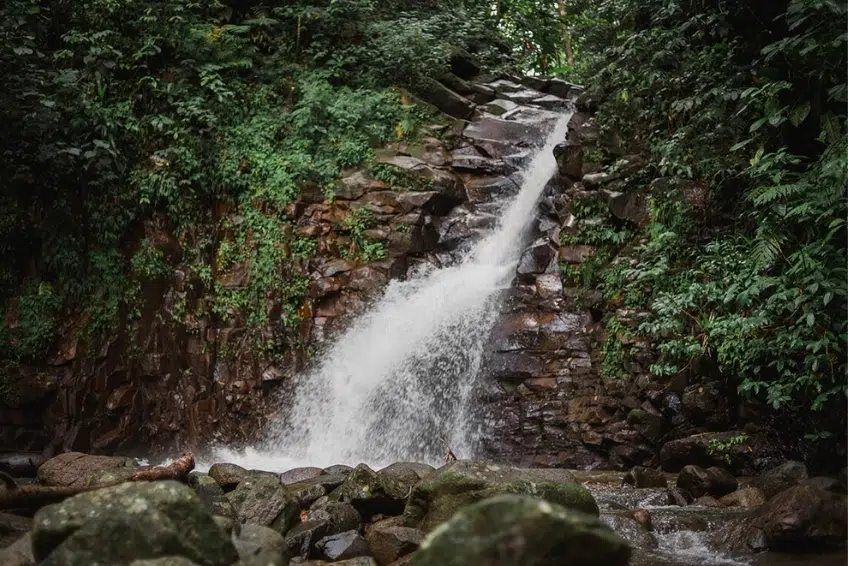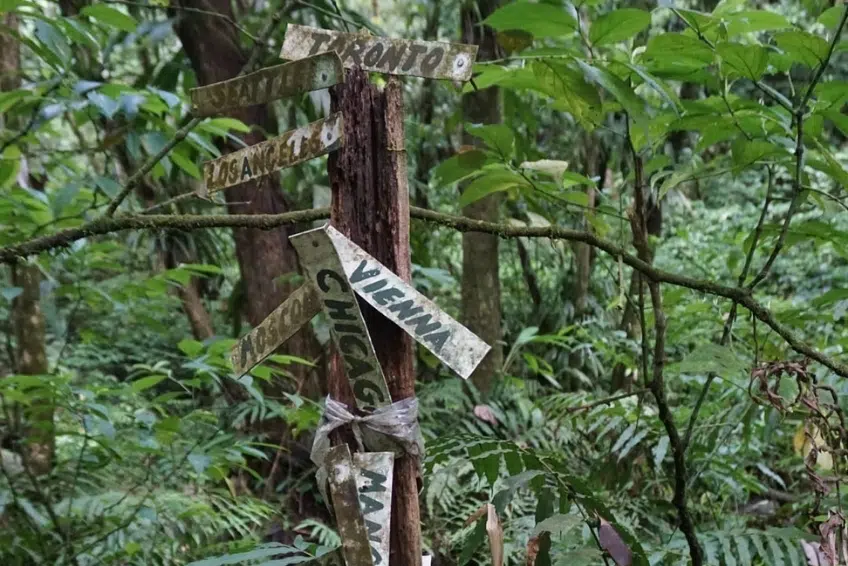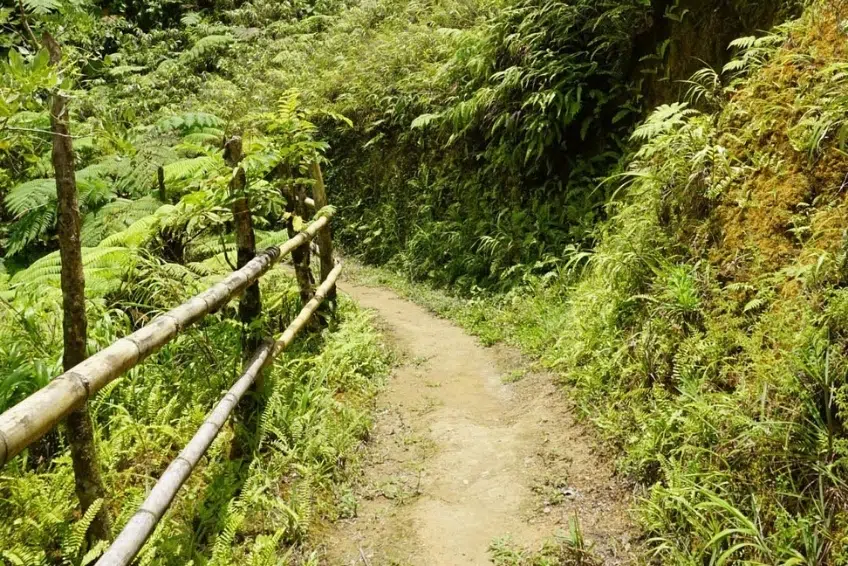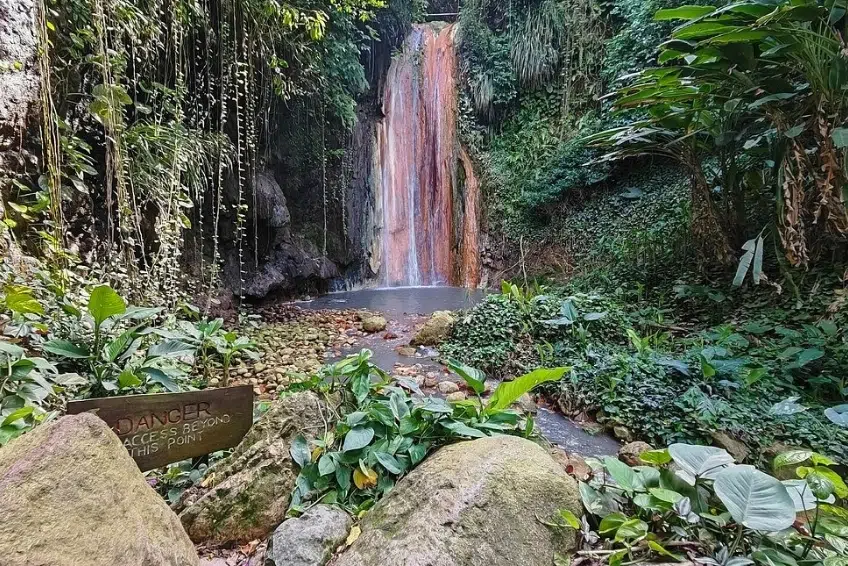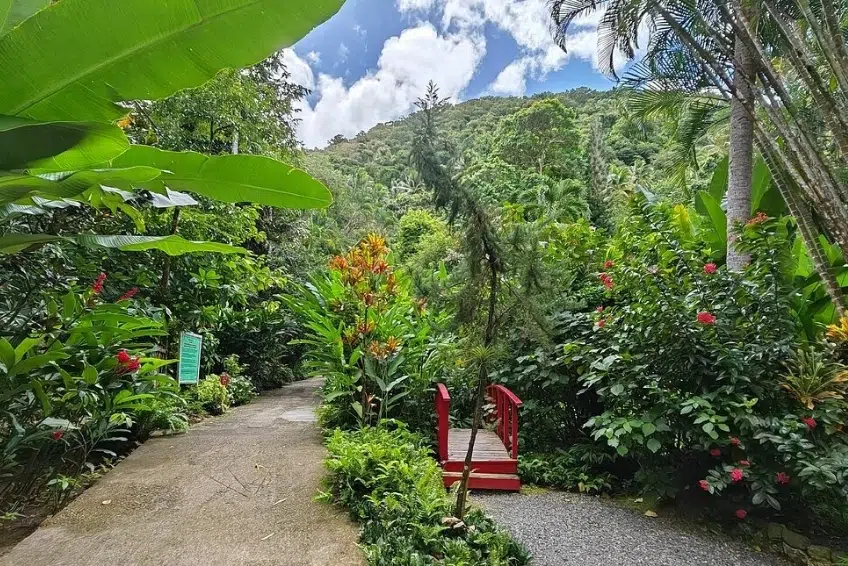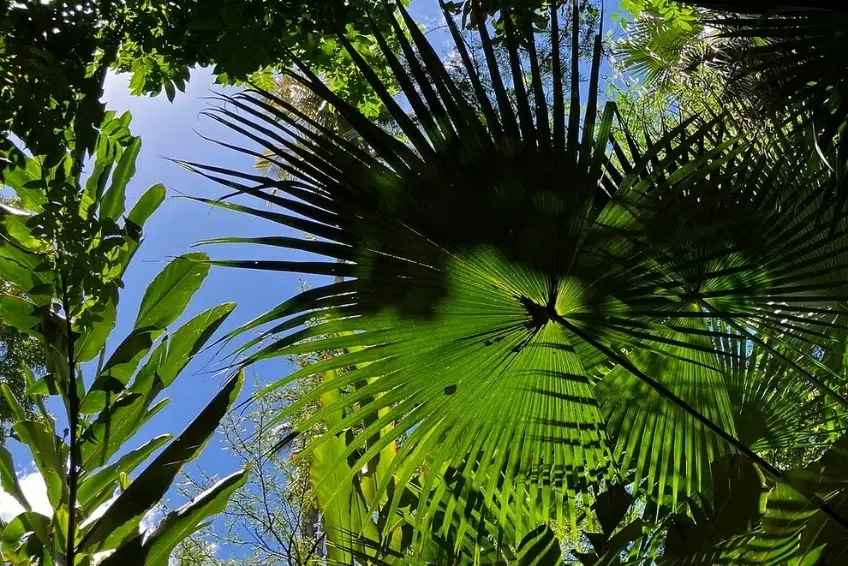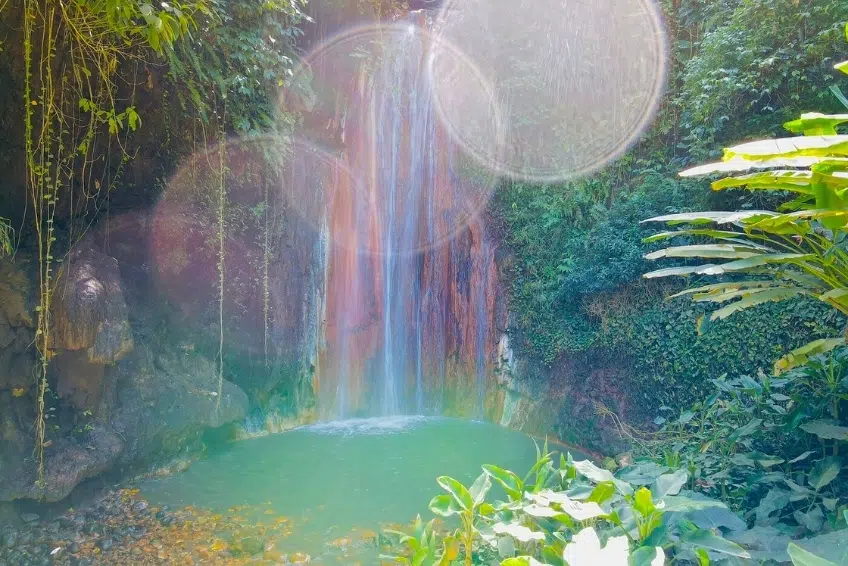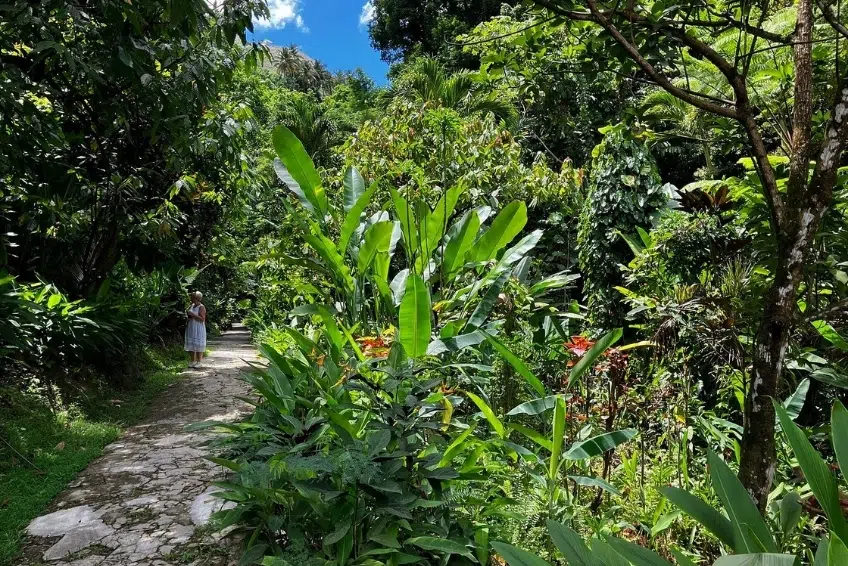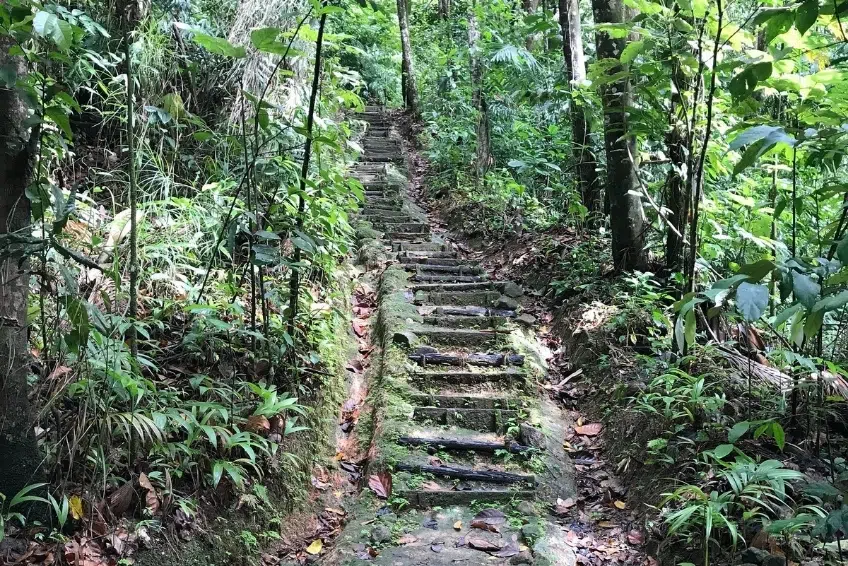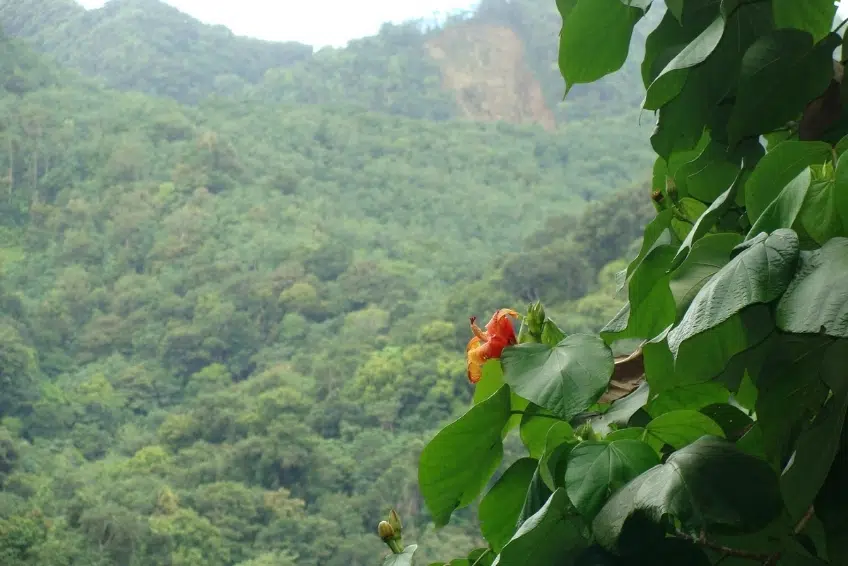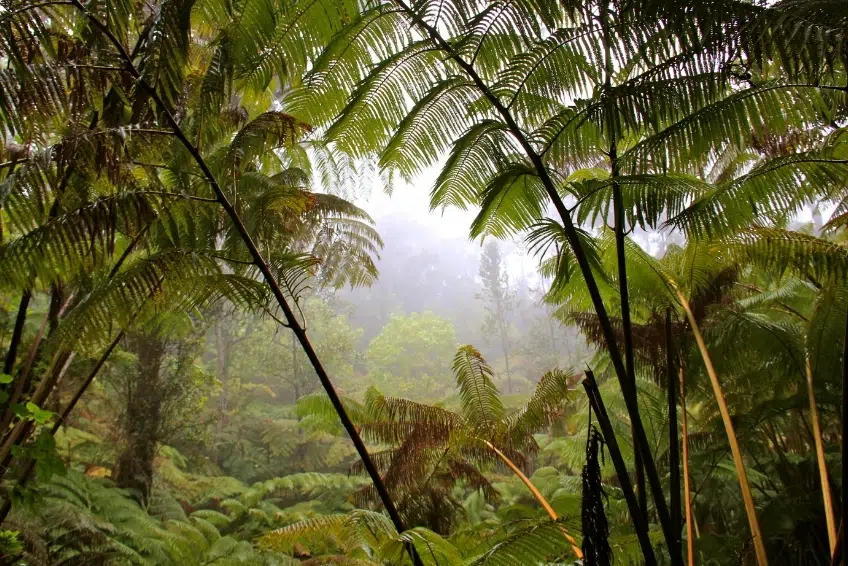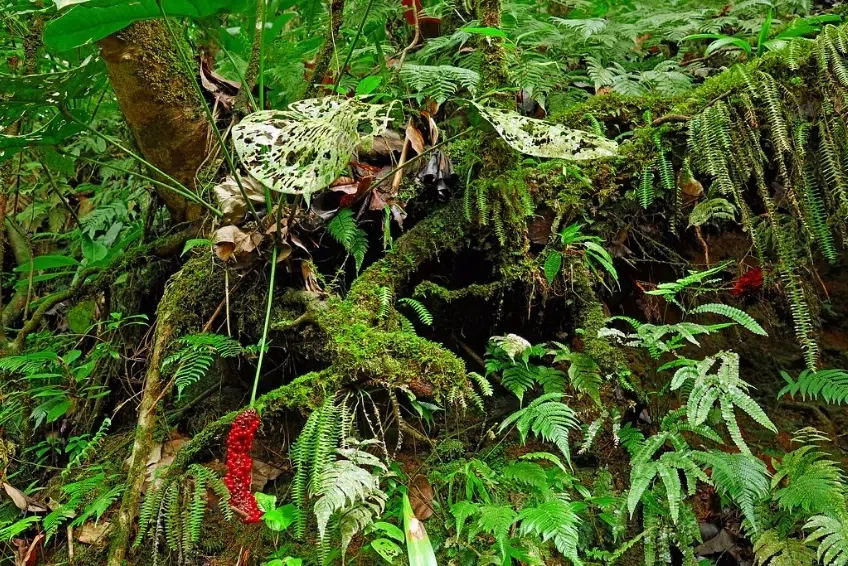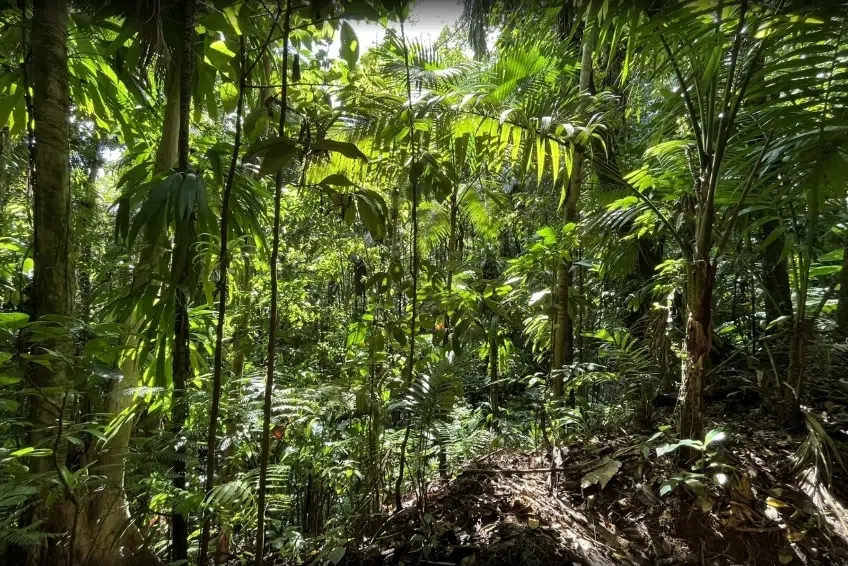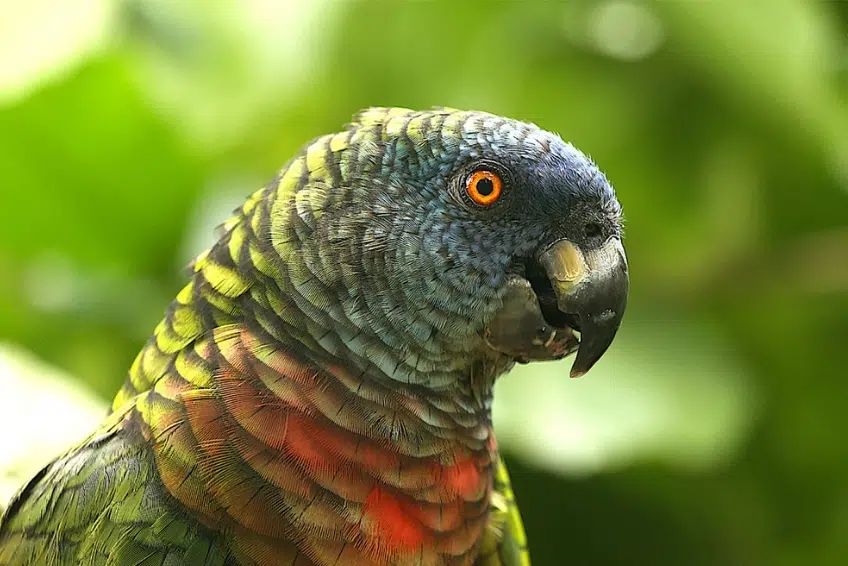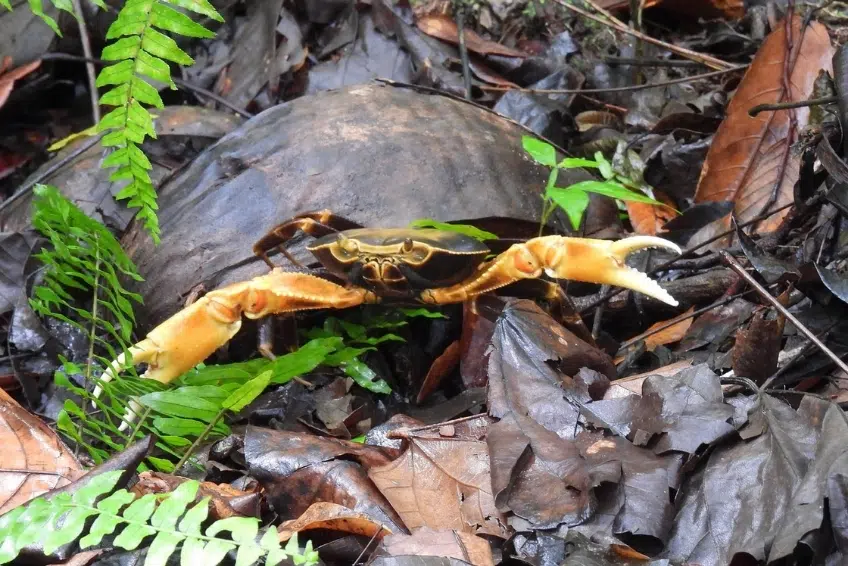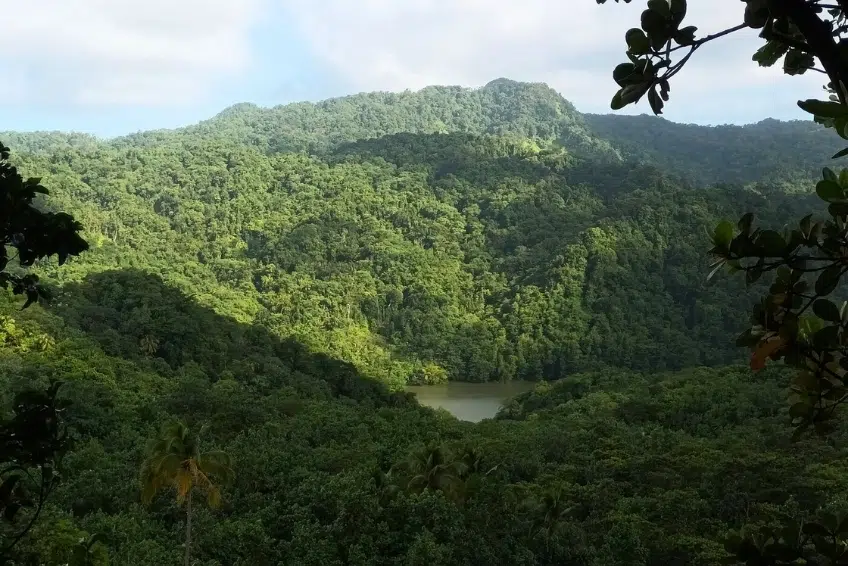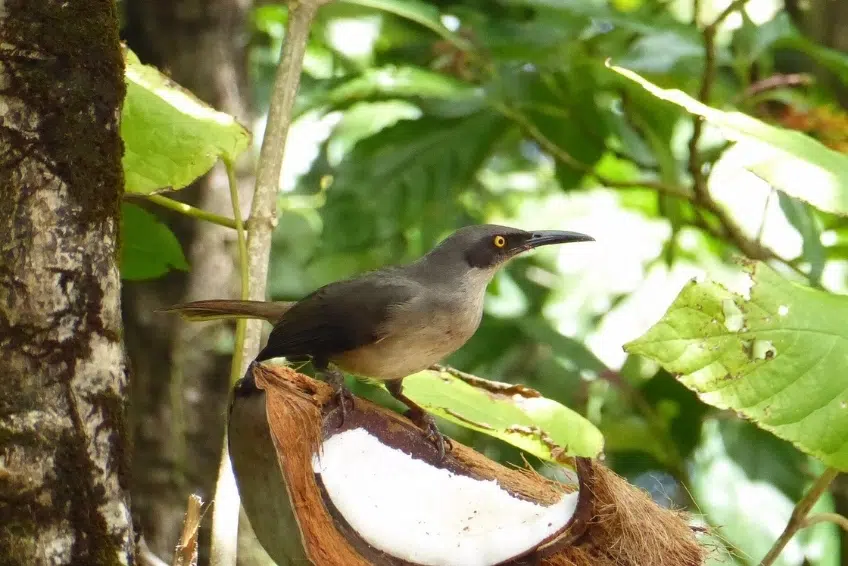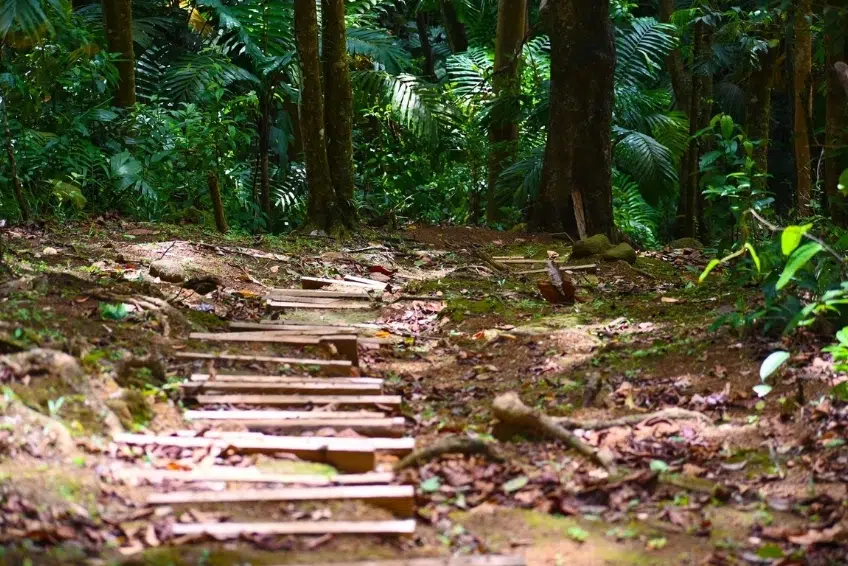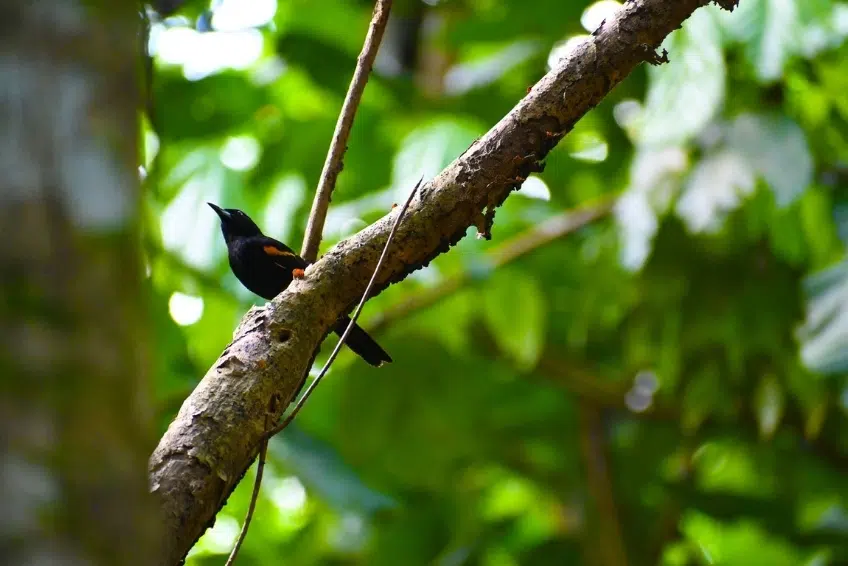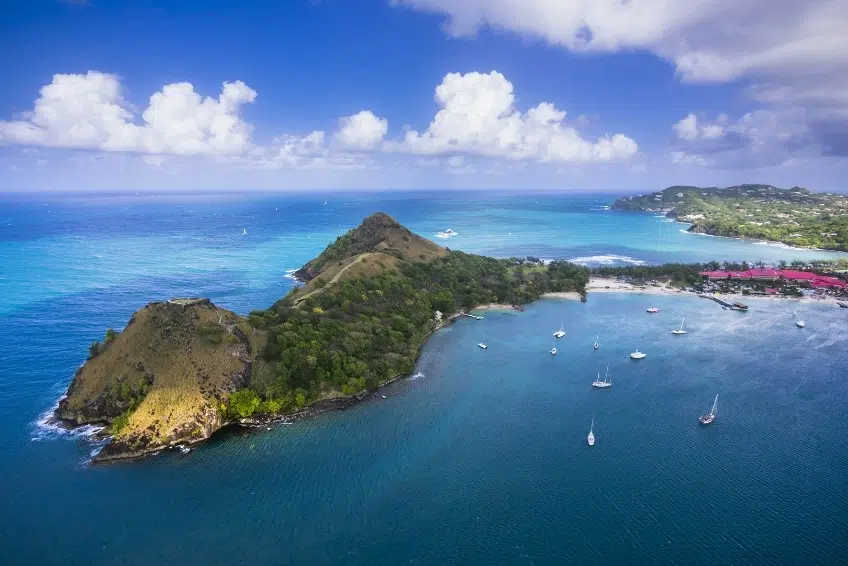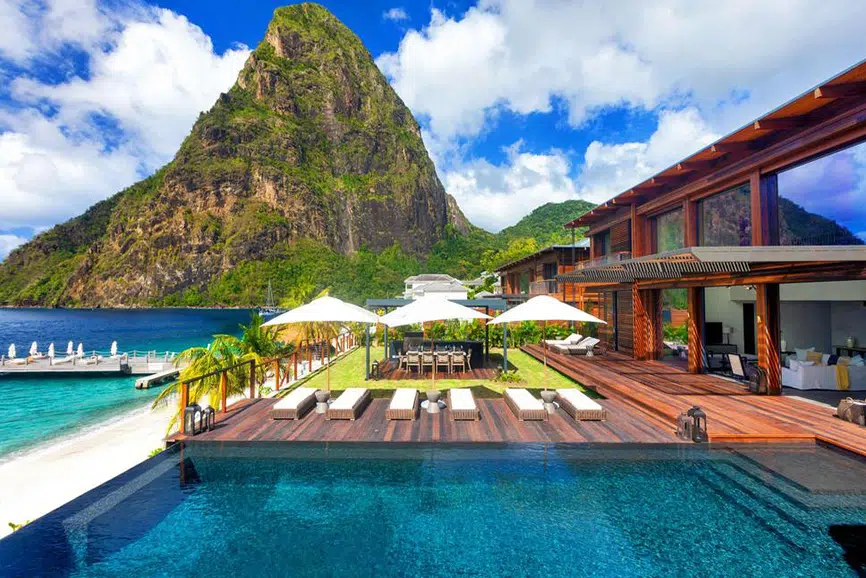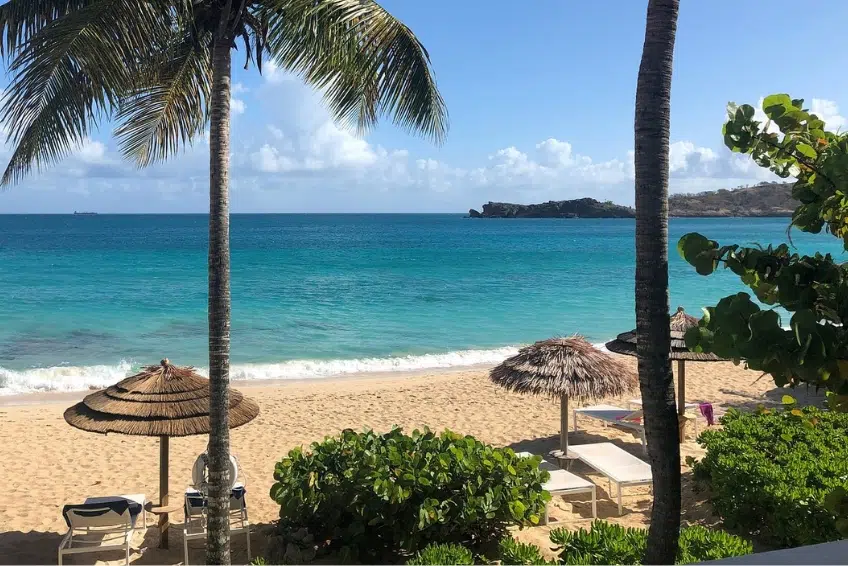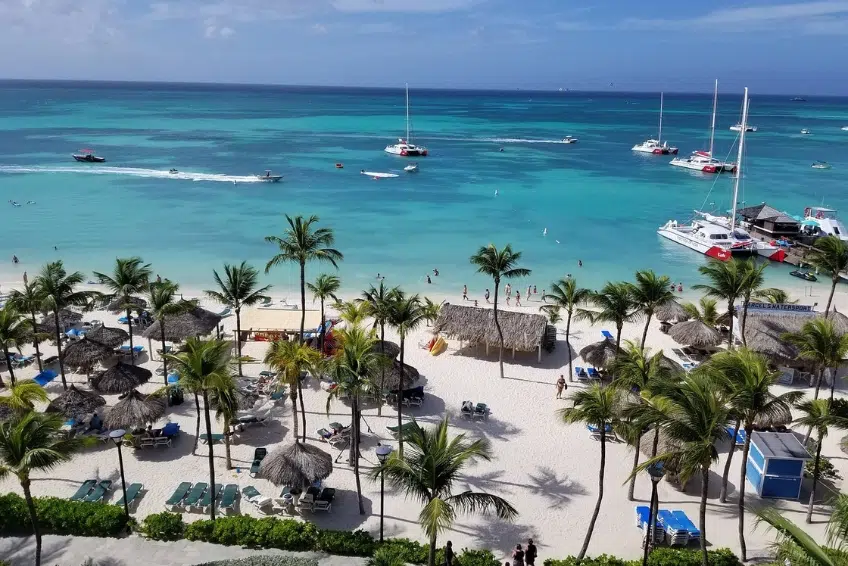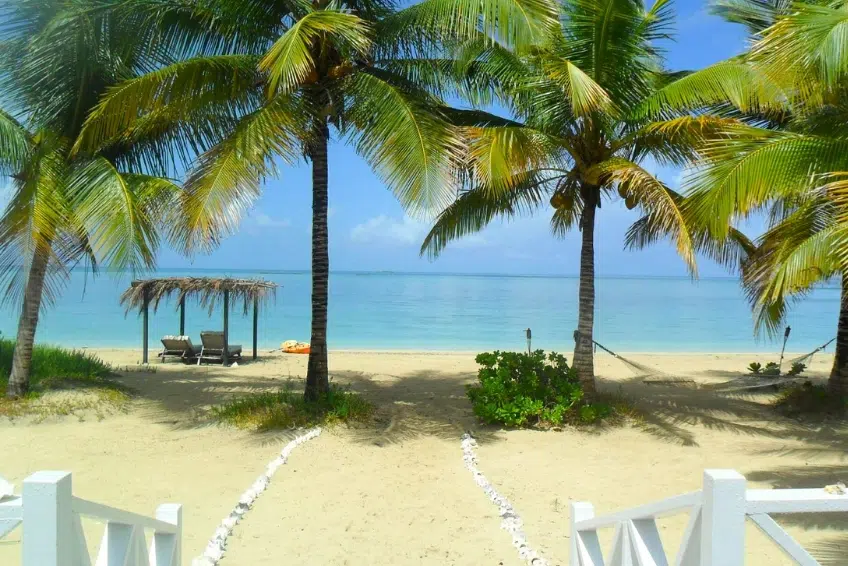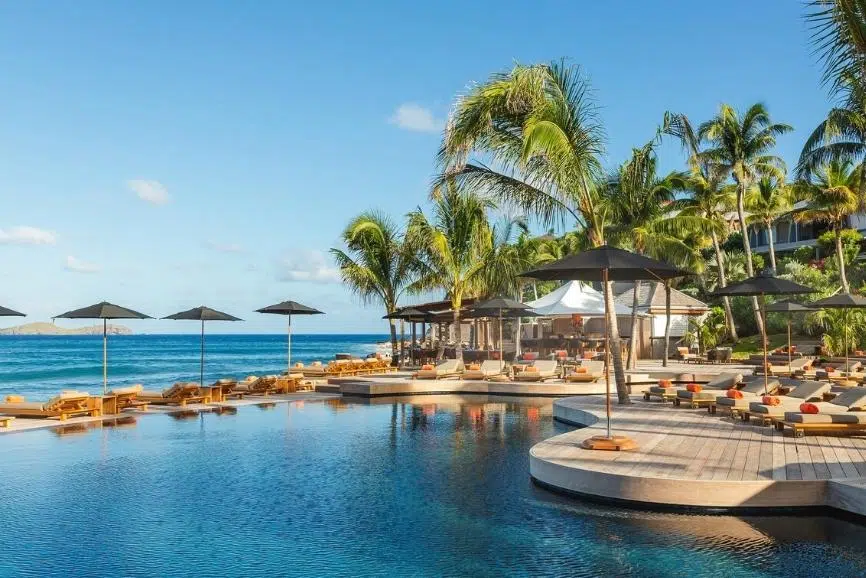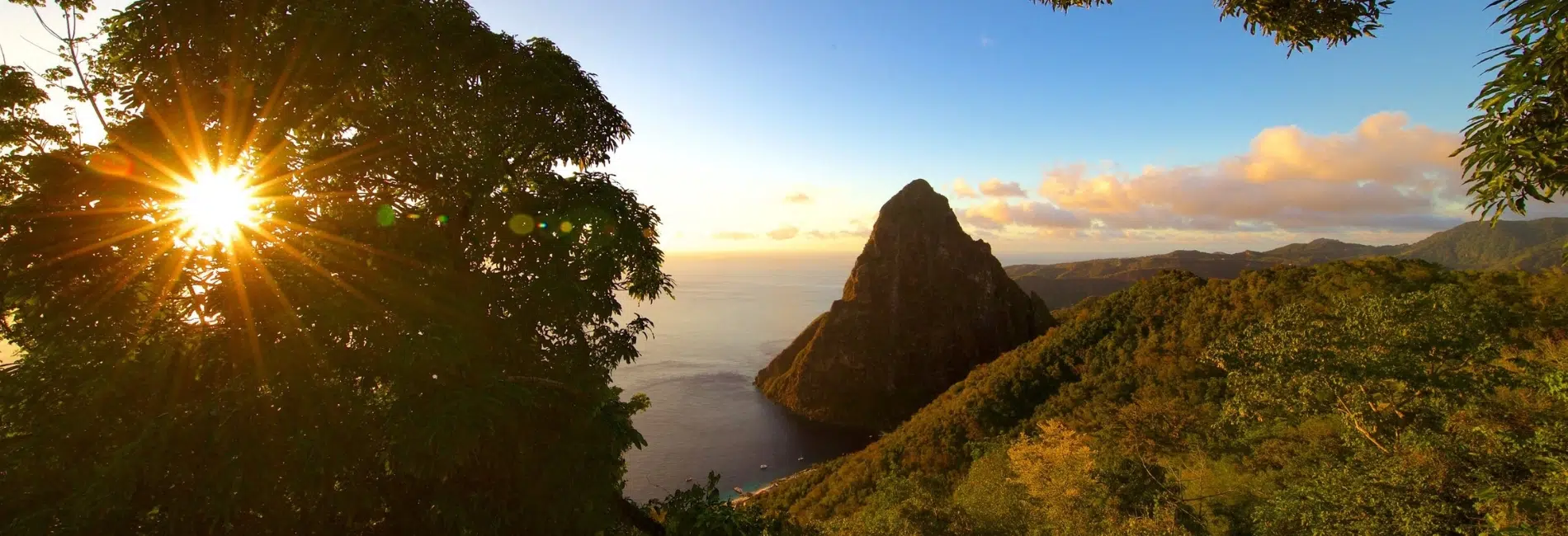
The 7 Best St. Lucia Hiking & Nature Activities
 Laura Schulthies
Laura Schulthies
 Laura Schulthies
Laura Schulthies
When you’re ready to trade your beach chair for hiking boots, St. Lucia transforms into a hiker’s paradise where volcanic peaks pierce tropical clouds and endemic parrots call from ancient rainforests. This Caribbean gem packs extraordinary biodiversity into just 238 square miles, creating trails that lead through habitats found nowhere else on Earth. We have found seven hiking and nature experiences that showcase the island’s wild heart, from challenging mountain summits to peaceful botanical sanctuaries where time seems to slow.
This article contains affiliate links. If you click on our links, we may earn a small commission at no extra cost to you. This helps us continue to offer free travel guides, but does not influence our recommendations in any way. Thanks for supporting independent travel content.
Contents
click to see more images
1. Gros Piton Nature Trail: Conquer the Caribbean's Most Iconic Peak
The Gros Piton stands as St. Lucia’s ultimate hiking challenge and most recognizable landmark. This UNESCO World Heritage volcanic cone rises 2,619 feet directly from the sea, creating one of the most dramatic and rewarding summit hikes in the Caribbean. Unlike many tourist trails, this is genuine mountaineering that tests your endurance and rewards you with views that stretch across the entire Windward Islands.
Details at a Glance:
- Duration: 3-4 hours round trip (2-3 hours up, 1-2 hours down)
- Distance: 4 miles (6.5 km) round trip with 2,619 feet (771 m) elevation gain
- Difficulty: Strenuous. Requires good fitness and hiking experience
- Guide requirement: Mandatory certified guide (legally required)
- Current fees: $50 USD per person, including guide and park entrance
- Best time: Start at 7:00 AM (trail open 7:00 AM – 2:00 PM) to avoid heat and cruise ship crowds
- Age restrictions: Minimum 7 years old due to difficulty and boulder scrambling
- Group size: Maximum 4 people per guide for safety
The Summit Challenge
The trail begins in the village of Fond Gens Libre at the official interpretive center, where you’ll meet your mandatory guide and complete safety briefings. This isn’t just bureaucratic red tape. The trail presents genuine hazards, including loose volcanic rock, steep drop-offs, and sections requiring scrambling over boulders up to 24 inches high. Local guides know the mountain’s moods and can navigate safely through areas where the path nearly disappears.
The first hour follows a relatively gentle incline through cultivated land where breadfruit trees and banana plants give way to wild rainforest. Tree ferns unfurl like prehistoric umbrellas overhead, while bromeliads and orchids cling to moss-covered trunks. Your guide will point out medicinal plants still used by local communities and explain how escaped slaves once used these mountain hideouts to evade colonial authorities.
The real test begins around the halfway point, where the trail steepens dramatically and the terrain becomes increasingly rocky. You’ll use tree roots as handholds and navigate natural rock steps that become treacherously slippery when wet. The final 800 feet gain nearly vertical elevation, requiring careful placement of every step and occasional hand-over-hand climbing using natural features.
The Summit Experience
Reaching the summit feels genuinely earned after 3-4 hours of sustained climbing. The 360-degree views encompass the entire southwestern coast, the sister peak of Petit Piton rising like a green spear from the turquoise sea, and on clear days, the neighboring islands of Martinique and St. Vincent. Early morning climbs offer the most spectacular lighting, though visibility improves as the day progresses.
The summit plateau is surprisingly spacious, with room to rest and absorb the achievement. Many hikers feel an overwhelming sense of accomplishment mixed with a spiritual connection to the landscape. You’re standing atop a volcanic plug that erupted from the seafloor millions of years ago, a gentle reminder of the immense geological forces that shaped these islands.
Safety and Preparation
This hike demands serious preparation and respect. Most people underestimate the difficulty. Expect to be “completely spent” by the summit. Weather changes rapidly at elevation, and afternoon thunderstorms can create dangerous conditions with lightning and flash floods. The volcanic rock becomes treacherously slippery when wet, and the remote terrain could complicate rescue operations.
Physical preparation matters more than many visitors realize. If you struggle with sustained uphill walking for more than an hour, this hike will overwhelm you. The combination of tropical heat, extreme humidity (bring bandanas), and sustained steep climbing challenges even fit hikers. Proper hiking boots with aggressive tread are non-negotiable.
Island Life Tips: We suggest bringing 2-3 liters of water per person (not the 1 liter some guides suggest) and electrolyte supplements. Start at 6:00-7:00 AM to avoid the 10-11 AM cruise ship crowds that can create dangerous bottlenecks on narrow sections. The homemade ice cream stand at the base ($6 for two scoops) provides perfect post-hike refreshment. Also, we suggest you tip your guide generously in cash. They work incredibly hard to ensure your safety and success, often for modest daily wages.
click to see more images
2. Tet Paul Nature Trail: Panoramic Piton Views Without the Suffering
For hikers seeking spectacular mountain views without the grueling summit climb, the Tet Paul Nature Trail offers the perfect compromise. This beautifully designed interpretive trail winds through a working agricultural community where traditional farming methods continue alongside modern conservation efforts. However, recent access confusion requires careful attention to directions.
Details at a Glance:
- Our choice for families: Easy trail with incredible Piton views
- Duration: 45 minutes to 1 hour, depending on pace
- Distance: 0.6-mile (1 km) loop trail with minimal elevation gain
- Difficulty: Easy to moderate with some uphill sections and stairs
- Current entry fee: $10 USD adults, $5 USD children (12 and under)
- Operating hours: 8:00 AM – 5:00 PM daily (including Sundays)
- Best time: Early morning (8:00-9:00 AM) for optimal lighting and fewer crowds
- Age suitability: Family-friendly but not wheelchair accessible due to uneven terrain and stairs
- Important note: Two separate entrances currently operate due to ownership disputes
Navigation Alert
Be aware of misleading signs when driving to Tet Paul Nature Trail. Follow the official directions to drive to the top hill and ignore any “Community Hike” signs you may encounter. Look for the correct trailhead with parking areas and a large mango tree. This is the official entrance that provides the complete guided experience with facilities including restrooms and guide services.
The Trail Experience
The experience begins at the visitors center, where friendly guides provide walking sticks and a brief orientation. The first section follows a gentle incline through community gardens where pineapples, dasheen, and breadfruit grow in traditional plots. These aren’t tourist displays; they’re working farms that feed local families and demonstrate sustainable agriculture techniques passed down through generations.
Educational signage identifies native plants and explains their traditional uses. You’ll learn that the leaves of the soursop tree treat insomnia, while fever grass provides natural relief from colds and flu. Bay leaves grow wild here, and your guide might crush fresh specimens to release their aromatic oils. This living pharmacy concept reflects the deep botanical knowledge that sustained Caribbean communities for centuries.
Spectacular Viewpoints
The trail’s crown jewel is the “Stairway to Heaven” viewpoint offering unobstructed panoramas of both Pitons rising from Jalousie Bay. The engineering cleverly positions multiple platforms to frame the mountains from different angles, creating varied photographic opportunities. Early morning light illuminates the peaks while afternoon sun backlights them dramatically against storm clouds.
Beyond the Pitons, views extend across St. Lucia’s southern peninsula to Maria Islands Nature Reserve and, on clear days, all the way to St. Vincent. The contrast between the cultivated valley floor and wild mountain peaks illustrates how human communities have adapted to this dramatic landscape over centuries.
The traditional Lucian house, carefully restored to demonstrate 19th-century island life, contains period furniture and cooking implements offering insight into how previous generations lived sustainably within their natural environment. The organic vegetable garden demonstrates permaculture techniques that maximize productivity while maintaining soil health.
Island Life Tips: We suggest bringing a small backpack for fresh fruit samples that guides often share during the tour. The mangoes, guavas, and star fruit grown here taste completely different from imported versions. Visit early in the day to avoid the 10:30 AM cruise ship crowds that can overwhelm the small trail system. The optional “stairway to heaven” climb requires moderate fitness but delivers the best panoramic views.
click to see more images
3. Pigeon Island National Park: Historical Trails with Coastal Views
Pigeon Island National Park combines natural beauty with fascinating military history, offering well-maintained trails that lead to strategic viewpoints once used to guard the Caribbean’s most important naval passages. This 44-acre former island, now connected to the mainland by a causeway, provides easy hiking suitable for families while delivering spectacular coastal vistas and insights into the colonial battles that shaped Caribbean history.
Details at a Glance:
- Our choice for history and nature combination: Easy trails with spectacular views and historic ruins
- Duration: 2-3 hours for complete exploration, including museum visit
- Distance: 2 miles of interconnected trails with varying difficulty levels
- Current entry fees: $10 USD adults, $3 USD children (5-12 years), free for under 5
- Operating hours: 9:30 AM – 5:00 PM daily (last entry 4:15 PM)
- Seasonal closure: May close briefly for Jazz Festival (mid-May), closed December 25
- Difficulty: Easy to moderate with one challenging summit trail
- Best for: Families, photography, history enthusiasts, coastal birding
- Facilities: Museum, restaurant, beach access, restrooms, gift shop with credit card acceptance
- Peak elevations: Fort Rodney is at 225 feet, while Signal Peak is at 330 feet, offering panoramic views
Strategic Military History
Pigeon Island’s position at the northwestern tip of St. Lucia made it one of the Caribbean’s most strategically important military installations during the colonial era. British Admiral George Rodney established his headquarters here in the 1780s, using the island’s elevated position to monitor French naval movements from Martinique while coordinating the British fleet’s operations throughout the Lesser Antilles.
The ruins scattered throughout the park tell the story of 18th-century naval warfare when European powers battled for Caribbean dominance. Fort Rodney’s stone foundations remain largely intact, including barracks, ammunition storage, and the commanding officer’s quarters where Rodney planned the decisive 1782 Battle of the Saintes that broke French naval power in the region.
Trail System and Viewpoints
The park’s trail network offers options for different fitness levels and time constraints. The Heritage Trail provides an easy loop connecting major historical sites at sea level, while the more challenging Signal Hill Trail climbs to the park’s highest point for panoramic views across Rodney Bay and the northern coast.
The Battery Trail follows the western coastline where defensive positions were strategically placed to command the approach channels. Restored cannon emplacements demonstrate how artillery was positioned to create overlapping fields of fire that could devastate attacking ships. Modern safety railings allow visitors to explore these cliff-top positions safely while imagining the tension of 18th-century naval warfare.
Signal Peak Summit
The climb to Signal Peak represents the park’s most challenging trail, but rewards effort with the best views in northern St. Lucia. The steep path gains 360 feet of elevation through dry forest habitat that differs significantly from the island’s rainforest interior. Cacti, agave, and other drought-adapted plants demonstrate how Caribbean ecosystems vary dramatically within short distances.
The summit provides 360-degree views encompassing Rodney Bay Marina below, the Atlantic coastline to the east, and neighboring Martinique visible on clear days. Morning light creates ideal photographic conditions, while sunset visits offer romantic silhouettes of sailing vessels anchored in the protected bay.
Natural History and Wildlife
Despite its small size and human modifications, Pigeon Island supports interesting wildlife populations that demonstrate Caribbean coastal ecology. The dry forest habitat attracts different bird species than the interior rainforests, including brown pelicans, frigate birds, and various tern species that nest on offshore rocks.
Large iguanas bask on sun-warmed rocks throughout the park, providing excellent photography opportunities for visitors patient enough to approach slowly. These prehistoric-looking lizards play important ecological roles as seed dispersers, while their impressive size (some exceed four feet in length) adds to the island’s unique character.
Cultural Events and Facilities
Pigeon Island serves as St. Lucia’s premier outdoor venue, hosting the annual Jazz Festival and other major cultural events that attract international visitors. The natural amphitheater created by the park’s topography provides excellent acoustics, while the historic setting adds atmosphere to musical performances.
The on-site museum houses artifacts recovered from archaeological excavations, including military equipment and everyday objects that reveal how soldiers lived in this remote tropical outpost. The “Trust Island Life” gift shop offers locally made crafts and accepts credit cards, while the restaurant provides refreshments with spectacular views. Beach access allows swimming and relaxation after hiking.
Island Life Tips: We suggest timing your visit to avoid cruise ship crowds that typically arrive mid-morning and depart by mid-afternoon. Early morning or late afternoon visits provide better lighting for photography while offering more wildlife viewing opportunities. The $3 beach chair rental provides comfortable relaxation after hiking. Note the September closure period for restoration work when planning your visit. This temporary closure affects the entire facility.
click to see more images
4. Enbas Saut Waterfall Trail: Rainforest Cathedral with Swimming Holes (Proceed with Caution)
Deep in St. Lucia’s central mountains, the Enbas Saut trail leads through pristine rainforest to a series of cascading waterfalls and crystal-clear pools perfect for swimming. The name translates to “beneath the falls,” and this moderate hike delivers exactly that: A chance to bathe in mountain-fed pools while surrounded by towering trees that create a living cathedral of green. However, recent infrastructure concerns require careful consideration.
Details at a Glance:
- Our choice for nature immersion: Pristine rainforest with swimming opportunities
- Duration: 1.5-2.5 hours for complete experience (45-90 minutes actual hiking)
- Distance: 2.0-2.5 miles round trip with significant elevation changes
- Difficulty: Moderate with steep, muddy descents and wooden steps
- Entry fee: No fixed entry fee (local guides may offer services for tips)
- Guide recommendation: Optional but helpful for navigation and safety
- Best for: Experienced hikers comfortable with self-guided exploration
- What to bring: Sturdy footwear, extra water, insect repellent, GPS/maps
- Vehicle requirement: High-clearance 4WD vehicles are strongly recommended for the access road
Important Safety Advisory
This remote trail requires careful preparation and self-sufficiency. The access road is very rough and requires a high-clearance 4WD vehicle. Cell service is unreliable throughout the area. While the wooden stairs along the trail are generally in good condition, test each step carefully and bring your own first aid supplies. The area has no fixed facilities or emergency services, so proper preparation is essential.
The Rainforest Journey
The adventure begins with a challenging drive through rural villages where children wave from roadside homes and farmers tend small plots of vegetables and fruit trees. The trailhead lies at the end of a winding mountain road requiring high-clearance vehicles. The access road itself has become “an adventure”. Basic facilities include composting toilets and a small shelter.
The initial descent follows deteriorating wooden stairs and natural rock steps through dense forest. The environment immediately envelops you with bird calls, rustling leaves, and the distant sound of rushing water. Giant tree ferns create natural umbrellas while heliconia flowers provide splashes of orange and red against the overwhelming green backdrop.
A knowledgeable guide becomes essential here, not just for wildlife spotting but for navigation safety. The endemic St. Lucia parrot (Amazona versicolor) frequents this area, its brilliant plumage perfectly camouflaged against the forest canopy. Patient observation might reveal the St. Lucia warbler or colorful hummingbirds, including the purple-throated carib with its distinctive curved bill.
The Waterfall Sanctuary
The trail’s destination offers a 25-foot main waterfall tumbling down volcanic rock terraces, creating multiple levels of pools perfect for swimming. An additional 10-foot upper falls provides variety for those willing to explore further. The main cascade drops into a deep, clear pool surrounded by smooth boulders ideal for careful sunbathing or contemplative rest.
The water temperature remains refreshingly cool year-round, fed by mountain springs filtering through volcanic rock. The natural mineral content creates an almost silky feeling on your skin.
Multiple smaller pools offer varying depths and current strengths. However, exercise extreme caution around all water features due to limited safety infrastructure and emergency access challenges.
Current Visitor Realities
The 2024-2025 visitor experience requires self-sufficiency and proper preparation. Access roads have deteriorated substantially, requiring careful navigation and high-clearance vehicles. Friendly local guides may approach visitors offering services. If you choose to engage, agree on a reasonable fee in advance and ask around for typical rates.
The trail’s isolation offers pristine nature experiences but also creates challenges. No permits are required, and many visitors successfully complete self-guided hikes with proper preparation including GPS navigation, adequate water, and insect protection.
Alternative Considerations
Given current conditions, consider whether other St. Lucia waterfalls might better serve your needs. Diamond Falls offers safer access and facilities, while organized tour companies provide better safety protocols for waterfall experiences throughout the island.
Island Life Tips: If you decide to proceed, we strongly suggest hiring a reputable guide through established tour companies, never traveling alone, carrying comprehensive first aid supplies, and informing others of your detailed itinerary. Bring significantly more water and snacks than typically recommended, as emergency evacuation could require extended waits. The experience can be magical, but only with proper preparation and realistic expectations about current conditions.
click to see more images
5. Diamond Falls Botanical Gardens: Volcanic Wonders and Mineral Baths
Diamond Falls Botanical Gardens offers a perfect introduction to St. Lucia’s botanical diversity within a compact, well-maintained setting that’s accessible to visitors of all mobility levels. This historic estate combines natural volcanic features with cultivated gardens, creating an experience that’s part nature walk, part cultural history lesson, and part spa treatment with its famous mineral-colored waterfall and therapeutic baths.
Details at a Glance:
- Our choice for accessible nature: Gentle walks suitable for all ages and mobility levels
- Duration: 1-2 hours for complete gardens and waterfall experience
- Current entry fees: $7 USD for gardens, an additional $6 USD for mineral baths (children half-price)
- Operating hours: 10:00 AM – 4:00 PM Monday-Saturday, 10:00 AM – 3:00 PM Sunday (closed December 25)
- Best time: Early morning (10:00 AM) to avoid cruise ship crowds
- Difficulty: Easy with paved and maintained paths throughout
- What to bring: Oldest swimwear (mineral waters permanently stain fabric)
- Optional guide: Available for tips, provides detailed botanical information
- Facilities: Changing rooms, basic showers, snack bar, gift shop
Historical Significance
The gardens occupy part of a historic French colonial estate granted by King Louis XVI in the 1780s. The original thermal baths were constructed for French troops stationed in the Caribbean, taking advantage of natural volcanic springs bubbling up from deep within the Earth. These same mineral-rich waters that once soothed colonial soldiers now provide therapeutic benefits to modern visitors seeking natural healing and relaxation.
The estate’s sugar plantation history remains visible in carefully preserved ruins scattered throughout the gardens. Stone foundations mark where the great house once stood, while remnants of sugar mill machinery demonstrate the industrial processes that once drove the colonial economy. Interpretive signage explains how enslaved Africans transformed this volcanic landscape into productive agricultural land, leaving a complex legacy that shaped modern St. Lucia.
Botanical Diversity
The cultivated gardens showcase both native Caribbean species and exotic introductions that thrive in St. Lucia’s tropical climate. Massive African tulip trees provide canopy shade for understory plantings of heliconia, bird of paradise, and countless orchid varieties. Traditional medicinal plants grow alongside ornamental species, creating educational opportunities to learn about the traditional pharmacy that sustained island communities.
Tree ferns transported from the island’s rainforest interior create a prehistoric atmosphere in shaded areas, while colorful crotons and caladiums provide brilliant foliage displays that photographers especially appreciate. The garden design maximizes visual impact while maintaining easy navigation via well-maintained paths suitable for wheelchairs and mobility aids.
Birdlife flourishes in this protected habitat, with frequent sightings of banana quits, lesser Antillean bullfinches, and various hummingbird species attracted to flowering plants throughout the gardens. The combination of water features, diverse vegetation, and protection from hunting creates ideal conditions for both resident and migratory species.
The Diamond Waterfall
The garden’s centerpiece 17-meter (56-foot) waterfall showcases St. Lucia’s unique volcanic geology in spectacular fashion. Mineral-rich waters cascade down volcanic rock faces stained brilliant yellow, orange, and red by dissolved minerals, including sulfur and iron oxide. The colors shift subtly throughout the day as light angles change, creating constantly evolving photographic opportunities.
Unlike many waterfalls where swimming is prohibited, Diamond Falls offers a shallow wading pool at its base where visitors can experience the mineral waters firsthand. However, the strong mineral content permanently stains swimwear, so bring garments you’re prepared to sacrifice for the experience. The waterfall viewing area is well-maintained with safety railings and multiple vantage points.
Therapeutic Mineral Baths
For an additional $8 USD, visitors can soak in constructed mineral baths channeling the same therapeutic waters that cascade over the falls. Three side-by-side pools offer different temperature ranges (97-104°F), allowing gradual acclimatization to mineral-rich waters that locals believe provide healing benefits for arthritis, skin conditions, and general stress relief.
The mineral composition includes sulfur compounds that create the characteristic “rotten egg” smell associated with volcanic springs worldwide. While initially off-putting, most people quickly adapt to the odor and focus on the silky feeling of mineral-enhanced water on their skin. Soaking times of 15-20 minutes maximize therapeutic benefits without overwhelming the system.
Basic changing facilities and rinse showers are available, though these remain fairly rustic. The snack bar offers refreshments at tourist prices, so consider bringing your own water and snacks for better value.
Island Life Tips: We suggest visiting during weekday mornings when cruise ship groups haven’t yet arrived, as the gardens become quite crowded when multiple tour buses arrive simultaneously. Bring your oldest, darkest swimsuit, as the sulfur and minerals will permanently discolor any fabric. Pack a plastic bag for your stained clothes and a complete change of garments. Photography enthusiasts should visit during the “golden hour” before sunset, when warm light illuminates the colorful waterfall to spectacular effect, though morning visits offer better crowd control.
click to see more images
6. Des Cartiers Rainforest Trail: Premier Bird Watching Paradise
Hidden in St. Lucia’s central mountains, the Des Cartiers trail represents the island’s premier bird-watching destination where endemic species thrive in one of the Caribbean’s wettest and most biodiverse ecosystems. This relatively easy loop hike traverses ridge tops at 1,800 feet elevation through rainforest that receives up to 200 inches of annual rainfall, creating habitat conditions found nowhere else in the Lesser Antilles.
Details at a Glance:
- Our top choice for bird enthusiasts: Best chance to see the endemic St. Lucia parrot
- Duration: 3-4 hours, including travel time from main tourist areas (1-2 hours actual hiking)
- Distance: 2.5-mile (4 km) loop trail with minimal elevation change
- Difficulty: Easy to moderate, mostly flat following ridge lines
- Guide requirement: Required for group tours, individual entry permitted
- Current entry fees: Modest park entrance fee (~$4 USD) paid on-site, optional guide fees extra
- Best time: 6:00-8:00 AM departure for optimal bird activity
- Endemic species potential: All 5 St. Lucian endemics plus 13 Lesser Antillean endemics
- Group size: Limited to 8 people maximum for bird-watching tours
- Travel note: Requires 1-1.5 hours each way from the northwestern resort areas
The Journey to the Rainforest
Reaching Des Cartiers requires a scenic but lengthy drive through St. Lucia’s rural interior, passing through villages like Micoud, where traditional Caribbean life continues largely unchanged by tourism. The winding road climbs through banana plantations and small-scale farms before ascending into the mountains, where the landscape transforms into dense tropical rainforest.
The drive itself provides cultural education as you observe traditional farming methods, colorful Creole houses, and roadside vendors selling fresh produce. The journey time from northern resort areas often exceeds what tour operators suggest, so allow 4-5 hours total for the complete experience including travel.
The trailhead facilities include basic parking, composting toilets, and a small shelter where guides provide orientation and distribute bird identification cards featuring endemic species illustrations. The immediate transition from roadside to pristine forest demonstrates how quickly St. Lucia’s wild spaces begin once development pressure decreases.
Endemic Species Sanctuary
Des Cartiers offers excellent opportunities to observe St. Lucia’s five endemic bird species in their natural habitat. The star attraction, the St. Lucia parrot (Amazona versicolor), frequents the canopy here in good numbers. These large, brilliantly colored parrots were nearly extinct in the 1970s before dedicated conservation efforts brought them back from fewer than 100 individuals to current populations exceeding 2,000 birds.
Patient observation often reveals the St. Lucia warbler (Setophaga delicata), a delicate gray and yellow species found only on this island. The St. Lucia oriole (Icterus laudabilis) provides splashes of brilliant yellow and black as it moves through fruit trees, while the St. Lucia pewee (Contopus oberi) calls from exposed perches where it hunts flying insects.
The most secretive endemic, the St. Lucia black finch (Melanospiza richardsoni), requires expertise and luck to locate but rewards persistence with sightings of this distinctive seed-eating specialist. Early morning offers the best chances as birds are most active feeding and calling during the first few hours after sunrise.
Rainforest Ecosystem
The Des Cartiers ecosystem represents one of the world’s biodiversity hotspots in miniature. The consistent moisture and protection from hurricanes creates conditions where species evolve in isolation, leading to the high endemic rates that make St. Lucia special among Caribbean islands. Tree species include ancient specimens that predate European colonization, creating a multi-layered canopy structure supporting different bird communities at each level.
Epiphyte gardens drape every tree trunk and branch, with orchids, bromeliads, and ferns creating vertical ecosystems supporting specialized insects and small vertebrates. The forest floor remains relatively open due to dense canopy, but careful observation reveals fascinating adaptations, including plants that capture and digest insects in nutrient-poor volcanic soils.
Specialized Birding Experience
Professional birding tours provide equipment, including binoculars and telescopes, while guides trained in avian behavior maximize species encounters through knowledge of feeding areas, nesting sites, and seasonal movement patterns. The specialized tours cost triple standard hiking fees but deliver superior wildlife encounters for serious bird enthusiasts.
Guides can identify species by calls alone and know individual territories where specific birds can be found reliably. Small group sizes ensure personalized attention and flexibility to pursue interesting sightings as opportunities arise. Photography enthusiasts benefit from guides who understand lighting conditions and can position groups for optimal shooting angles.
Practical Considerations
The remote location and lengthy travel times make this activity best suited for dedicated nature enthusiasts rather than casual visitors. The humid forest environment creates challenging conditions with intense mosquito and no-see-um activity. Strong insect repellent and long sleeves are essential despite the heat.
Weather plays a crucial role in bird activity. Clear mornings following overnight rain often produce the best wildlife viewing as birds emerge to feed and call in the refreshed forest. However, heavy rain can make the trail muddy and dangerous while reducing bird visibility significantly.
Island Life Tips: We suggest booking specialized birding tours well in advance, especially during peak season when expert guides are heavily booked. The lengthy travel time makes this a full-day commitment, so start early and bring substantial snacks and water. Most importantly, practice patience and quiet movement. The best wildlife encounters often require waiting motionless in productive areas rather than constantly moving along the trail. Consider combining this with other east coast activities to maximize the value of the long drive time.
click to see more images
7. Millet Bird Sanctuary: Protected Forest Reserve Experience
The Millet Bird Sanctuary offers St. Lucia’s most exclusive nature experience, providing access to a protected forest reserve where conservation efforts have created ideal conditions for endemic species recovery. This guided-only trail requires advance planning but rewards visitors with intimate encounters with rare birds and plants in an ecosystem carefully managed to maximize biodiversity.
Details at a Glance:
- Our choice for serious naturalists: Protected reserve with guided-only access
- Duration: 2-3 hours, depending on wildlife encounters
- Distance: 2-mile loop through primary and secondary forest
- Guide requirement: Mandatory guided access only. No self-guided visits permitted
- Advance booking: Required 2-3 days minimum through Forestry Department (no walk-ups)
- Current entry fees: ~EC$25 (approximately $9 USD) plus guide fees
- Group size: Small groups are typical (around 6 people or fewer)
- Best for: Endemic bird species, forest ecology education, conservation tourism
- Difficulty: Moderate with some steep sections and root obstacles
- Contact: Forestry Department at +1758-451-1691, +1758-519-0787, or +1758-716-1430
Conservation Success Story
The Millet reserve represents one of St. Lucia’s greatest conservation achievements, transforming degraded agricultural land back into thriving forest habitat through decades of careful restoration. The sanctuary protects 78 acres of mixed primary and secondary forest where endemic species have been successfully reestablished after population crashes in the 1970s and 1980s.
Reforestation efforts combined native tree species with strategic placement of artificial feeding stations to attract and support recovering bird populations. The St. Lucia black finch, once nearly extinct, now thrives here thanks to supplemental feeding programs providing reliable nutrition during breeding seasons. Coconut shells filled with fresh coconut meat serve as feeders that visitors can observe during tours.
The sanctuary’s success demonstrates how targeted conservation efforts can reverse species decline when supported by community involvement and scientific management. Local guides receive training in conservation biology and can explain specific techniques used to restore habitat and monitor species recovery.
Guided Forest Experience
Professional forestry guides lead visitors through different habitat zones, explaining ecological relationships and pointing out species that would remain invisible to untrained eyes. The mandatory guide system ensures minimal impact on sensitive ecosystems while maximizing educational value through expert interpretation of forest dynamics and species behavior.
The trail begins in secondary growth, where fast-growing pioneer species have colonized former agricultural land. These areas provide edge habitat supporting different bird communities than the mature forest interior. Guides explain succession processes and demonstrate how forest recovers naturally when protection removes human pressure.
Deeper into the reserve, primary forest sections contain trees that may be centuries old, creating cathedral-like spaces where sound carries differently and wildlife behavior changes. These areas require respectful, quiet observation, as many species are easily disturbed by noise and sudden movements.
Endemic Species Encounters
The Millet sanctuary offers reliable opportunities to observe the St. Lucia black finch (Melanospiza richardsoni) thanks to strategic feeding stations that attract these normally secretive birds to observable locations. This endemic species, found nowhere else on Earth, nearly disappeared before conservation efforts created the protected habitat necessary for recovery.
St. Lucia parrots frequently visit the sanctuary, particularly during morning and late afternoon feeding periods. The combination of mature fruiting trees and protection from hunting creates ideal conditions for these magnificent birds that serve as the island’s national symbol. Patient observation often reveals family groups feeding together, providing insights into their complex social behaviors.
Other endemic species regularly encountered include the St. Lucia warbler, St. Lucia pewee, and occasionally the elusive St. Lucia oriole. The sanctuary’s biodiversity extends beyond birds to include endemic reptiles like the St. Lucia anole and rare butterfly species found only in these protected forest environments.
Educational Components
Millet sanctuary tours emphasize ecological education, explaining how tropical forest ecosystems function and demonstrating complex relationships between different species. Guides identify medicinal plants traditionally used by St. Lucian communities and explain sustainable harvesting practices that avoid damaging plant populations.
Tree identification becomes a fascinating lesson in Caribbean botany as guides point out species like massive gommier trees traditionally used for canoe construction, fast-growing cecropia trees providing food for many bird species, and strangler figs that begin life as epiphytes before eventually overwhelming their host trees.
Active research projects within the sanctuary provide opportunities for visitors to learn about ongoing conservation science. Bird banding stations allow scientists to monitor individual birds throughout their lifecycles, providing crucial data on population dynamics, breeding success, and habitat preferences.
Booking and Access
The guided-only policy strictly limits daily visitors to minimize environmental impact. Advanced booking through the Forestry Department is mandatory, with guides available Monday through Friday from 8:30 AM to 3:00 PM. Contact numbers include +1758-451-1691, +1758-519-0787, and +1758-716-1430.
Cash payment is required for entrance fees and guide tips, as credit cards are not accepted. The humid forest environment guarantees mosquito encounters despite elevation, so pack strong insect repellent and long sleeves despite warm weather.
Island Life Tips: We suggest contacting the Forestry Department at least a week before your planned visit to ensure guide availability and confirm current trail conditions. The sanctuary offers a genuinely unique experience unavailable elsewhere, but the advance planning and restricted access mean it works best for dedicated naturalists rather than casual visitors. Guides like Pamela receive consistent praise for their expertise in both bird identification and forest ecology, so request experienced guides when booking. Most importantly, embrace the slower pace required for wildlife observation. This precious habitat rewards patience and quiet movement over rushing to check boxes on a species list.
Essential Planning Guide
Current Pricing and Budget Planning
St. Lucia’s hiking and nature activity costs have increased significantly in 2024-2025, requiring updated budget planning. Gros Piton now commands $50 USD per person, including the mandatory guide, representing the island’s most expensive single hiking experience. Other activities range from $10 USD (Tet Paul, Diamond Falls, Pigeon Island) to $30 USD for specialized birding tours at Millet and Des Cartiers.
Transportation costs add substantially to activity expenses, particularly for remote locations like Des Cartiers requiring 1-1.5 hours each way from northwestern resort areas. Private taxi arrangements can cost $80-150 USD each way, while organized tour transportation typically adds $20-40 USD per person to base activity fees.
Consider purchasing combination packages where available, though compare carefully against individual pricing. Group discounts typically begin at 4-6 people, potentially offering 10-20% savings on guide fees and transportation. However, guide group size limits (maximum 4 for Gros Piton, 6-8 for forest reserves) may require multiple guides for larger parties.
Weather Windows and Seasonal Considerations
The dry season from December through April provides the most reliable conditions for all adventures, with trade winds moderating temperatures and minimal rainfall maintaining optimal trail conditions. This is also peak tourist season, meaning higher prices and crowded tours. Book at least two weeks ahead during this period, especially around Christmas, New Year’s, and Easter holidays.
May and June offer excellent value with mostly dry weather, thinner crowds, and occasional operator discounts. These months provide the sweet spot for adventure activities, with good conditions and better availability. However, afternoon thunderstorms become more frequent, affecting activities like Gros Piton, where lightning poses serious summit dangers.
Hurricane season officially runs from June through November, with the highest risk from August through October. Direct hurricane impacts remain rare. The last significant strike was Hurricane Tomas in 2010. Tours operate normally unless severe weather threatens, and you’ll often have activities nearly to yourself during this period.
Physical Preparation and Fitness Requirements
St. Lucia’s hiking challenges stem more from tropical conditions than extreme distances. The combination of heat, humidity, and steep volcanic terrain can exhaust even fit hikers who underestimate environmental factors. Recent reports consistently emphasize that most people underestimate difficulty levels, particularly for Gros Piton.
Cardiovascular fitness matters more than hiking experience, as sustained exertion in tropical heat demands good conditioning. Practice hiking with a daypack in warm weather before your visit. The ability to maintain a steady uphill pace for 45-60 minutes indicates adequate preparation for moderate trails like Tet Paul and the forest reserves.
Strenuous hikes like Gros Piton require the ability to climb continuously for 3-4 hours while carrying water and supplies. The boulder scrambling sections, reaching 24 inches high, demand upper body strength and balance. Flexibility training helps prepare joints for irregular volcanic terrain where root systems create natural steps and handholds.
Essential Gear and Packing Lists
Proper footwear ranks as the most critical equipment decision. Hiking boots provide maximum ankle support and traction for Gros Piton’s rocky terrain, while trail running shoes offer adequate grip and comfort for easier trails. Never attempt any trail in sandals or casual sneakers. Recent accident reports cite inadequate footwear as a major safety factor.
Pack significantly more water than operators typically suggest. Bring 2-3 liters per person for Gros Piton (not the 1 liter some guides recommend) and 1-2 liters for forest trails. Electrolyte supplements help replace minerals lost through intensive sweating, while energy snacks prevent the bonking common during strenuous tropical hiking.
Sun protection becomes critical at elevation, where UV intensity increases and reflection off light-colored volcanic rock amplifies exposure. Wide-brimmed hats, long-sleeved lightweight shirts, and high-SPF sunscreen prevent burns that can ruin entire vacations. Bandanas provide crucial cooling when soaked with water and placed around necks.
Insect repellent containing DEET provides essential protection against mosquitoes and no-see-ums that carry diseases, including dengue and chikungunya. Long pants and sleeves offer additional protection in forest areas where biting insects are particularly aggressive, despite the tropical heat.
Photography and Wildlife Documentation
St. Lucia’s diverse ecosystems provide exceptional photography opportunities, but tropical conditions create equipment challenges. High humidity can cause condensation inside lenses when moving between air-conditioned vehicles and outdoor environments. Waterproof cases or dry bags protect equipment from rain and spray from waterfalls.
Wildlife photography requires patience and telephoto capabilities. Birds often remain high in forest canopies where standard zoom lenses cannot provide adequate magnification for quality images. Binoculars become essential for wildlife viewing even if you’re not specifically birding.
The golden hours after sunrise and before sunset provide the best lighting conditions while coinciding with peak wildlife activity. Midday tropical sun creates harsh shadows and contrast that challenge even professional equipment.
Transportation and Access Challenges
Rental cars provide maximum flexibility for reaching remote trailheads, but St. Lucia’s narrow, winding roads require careful attention and adequate time allowances. GPS navigation occasionally provides questionable route suggestions, particularly for locations like Enbas Saut requiring high-clearance vehicles for deteriorating access roads.
Most tour operators provide transportation from major resort areas, but pickup zones significantly affect pricing. Northern hotels around Rodney Bay typically incur no additional charges, while properties in Soufrière or Vieux Fort may require surcharges for longer drives. Confirm pickup details and additional fees when booking.
Taxi arrangements for independent exploration work well for accessible sites like Tet Paul or Diamond Falls, but remote locations like Des Cartiers may require expensive waiting times that can exceed $200 USD for the complete experience.
Health and Safety Considerations
Standard travel insurance typically excludes adventure activities, making specialized coverage essential for hiking-focused trips. Policies should include helicopter evacuation benefits since St. Lucia’s mountainous terrain complicates ground-based rescues from remote areas like Enbas Saut, where cell coverage is nonexistent.
The island’s medical facilities handle routine injuries and illnesses adequately, but serious trauma cases often require evacuation to Martinique or Miami. This reality makes accident prevention critically important, so don’t take unnecessary risks for photographs or to prove physical capabilities.
Recent safety concerns include deteriorating infrastructure at Enbas Saut, unauthorized individuals demanding payment for “guide services,” and access confusion at Tet Paul due to ownership disputes. Research current conditions and use only established operators for guided activities.
Alternative Activities Worth Considering
Mount Gimie, St. Lucia’s highest peak at 3,117 feet, offers an exceptional alternative for experienced hikers seeking pristine wilderness experiences. This challenging 5-7 hour expedition provides 360-degree island views with far fewer crowds than the Pitons. However, mandatory guide requirements and vertical sections requiring hand-over-hand climbing make it suitable only for well-prepared adventurers.
Mamiku Gardens presents a superior botanical alternative to Diamond Falls for visitors seeking diverse plant species and historical plantation ruins without crowds. Located on the quieter east coast, its professional design and extensive labeled collections provide 1-3 hours of educational exploration at $10 USD entrance fee.
The Rainforest Adventures Ultimate Three Package combines aerial tram rides, zip-lining, and nature trails at 2,000 feet elevation, offering comprehensive eco-adventure experiences within the Queen’s Commonwealth Canopy protected forest system.
Making the Most of Your Nature Experience
St. Lucia’s hiking and nature activities deliver genuine wilderness experiences within a relatively compact Caribbean destination. The island’s volcanic origins created dramatic topography that packs extraordinary biodiversity into accessible areas, while conservation efforts have successfully protected critical habitats for endemic species.
Success depends on matching activities to your interests and fitness level while respecting the natural environments that make St. Lucia special. Current conditions require more preparation and realistic expectations than promotional materials often suggest. Price increases, infrastructure challenges, and seasonal access limitations demand careful planning and flexibility.
Whether you’re conquering the challenging Gros Piton summit or enjoying peaceful strolls through Diamond Falls gardens, each trail offers unique insights into this remarkable island’s natural heritage. By choosing activities thoughtfully, preparing adequately, and starting early to avoid crowds, you’ll create memories of one of the world’s most biodiverse and beautiful tropical destinations while supporting the conservation efforts that ensure these experiences remain available for future generations.
CARIBBEAN
Islands, Beaches, Cuisine and More
Nestled in the Lower Antilles is the beautiful green Caribbean island of St. Lucia. Famous for its towering Pitons, St. Lucia is home to jungles, pristine beaches, endless activities and more. Here is our guide to the best of St. Lucia.
St. Lucia is a picture perfect island in the northern Caribbean. With towering green Pitons, white sand beaches and turquoise water, there's something for everyone. Here are some of the best hotels on St. Lucia.
St. Lucia has a wide variety of restaurant and cuisine options available. From Castries to Soufriere, visitors can sample international cuisine as well as local dishes and fresh seafood aplenty. Here is our guide to the best restaurants in St. Lucia.
Packing for beach vacations shouldn’t be hard, so we’ve put together a unique beach vacation packing list to help and included some of our favorite items. From clothes to electronics and everything in between, we've got all the tips to make packing a breeze.
Whether you’re searching for family relaxation or some romance, each of these all-inclusive resorts in Antigua will deliver, with a dash of Caribbean luxury, and the perfect setting for your dream tropical vacation.
Aruba has a wide selection of excellent all inclusive resorts including 5-star luxury, family friendly, adults only and budget friendly options. Here is our guide to the best Aruba all inclusive resorts!
The Bahamas has everything you could desire for a perfect tropical getaway; a warm climate, sparkling blue waters and friendly locals. Here are the best all-inclusive resorts in the Bahamas that you should definitely look into.
Welcome to the ultimate guide to Cayman Islands all inclusive resorts! Whether you’re looking for a family-friendly resort or a romantic adults-only retreat, we’ve got you covered with this list of the best all inclusive resorts in the Cayman Islands.
The Dominican Republic is known for its picturesque beaches, lush jungles, rich cultural heritage and friendly locals. Here is our list of the best Dominican Republic all inclusive resorts to make your visit to the Dominican Republic incredible.
Welcome to the ultimate guide to Jamaica all inclusive resorts! Whether you’re looking for a family-friendly resort or a romantic adults-only retreat, we’ve got you covered with this list of the best all inclusive resorts in Jamaica!
Are you ready for that Puerto Rico getaway? This guide to the best all inclusive resorts in Puerto Rico will help you to choose the perfect resort for your relaxation escape.
St. Bart’s offers a refined and intimate atmosphere for a bevy of high-class travelers, including many celebrities. We’ve compiled the top six resorts in St. Bart’s for various budget types that you should check out.



